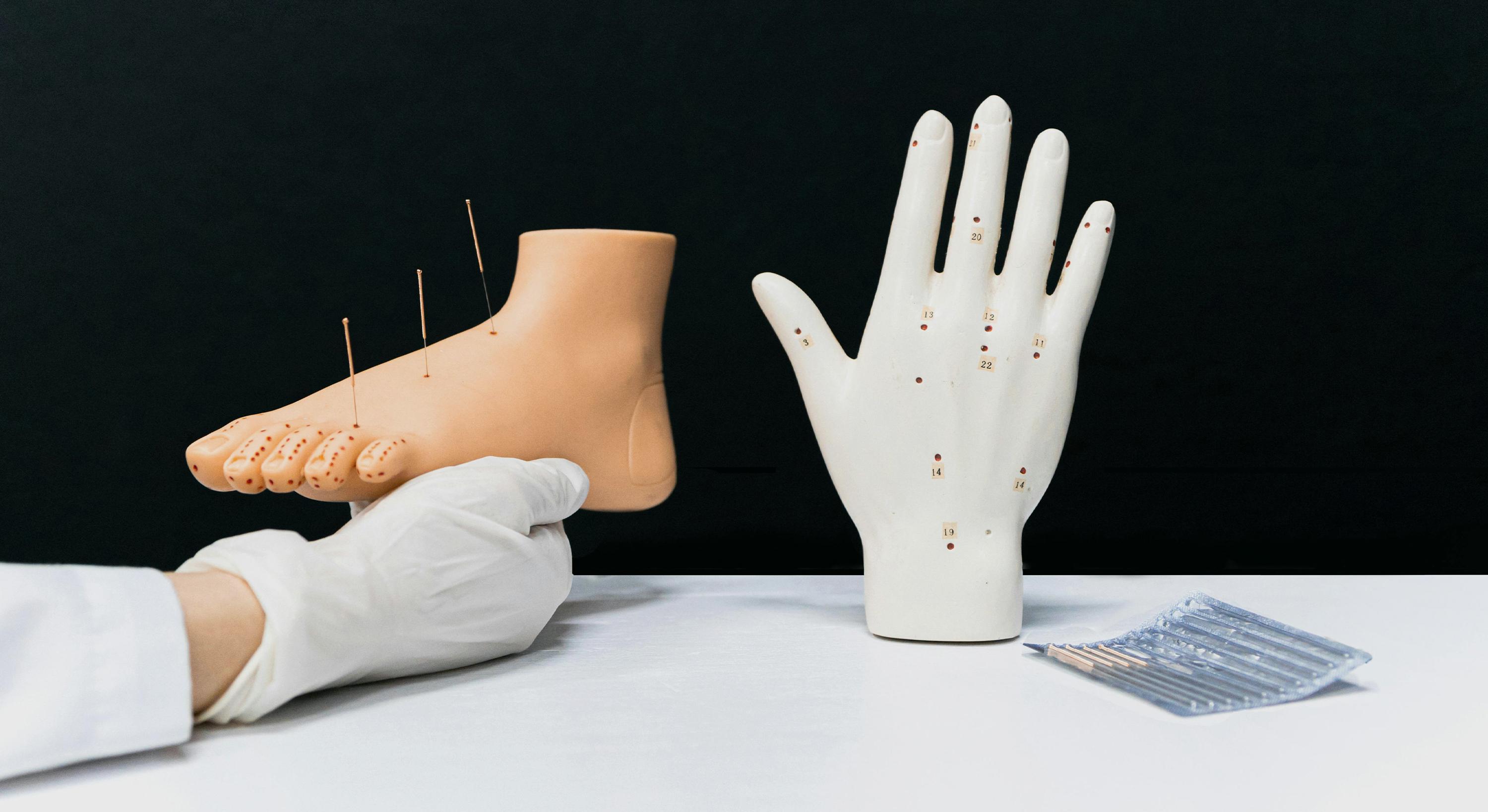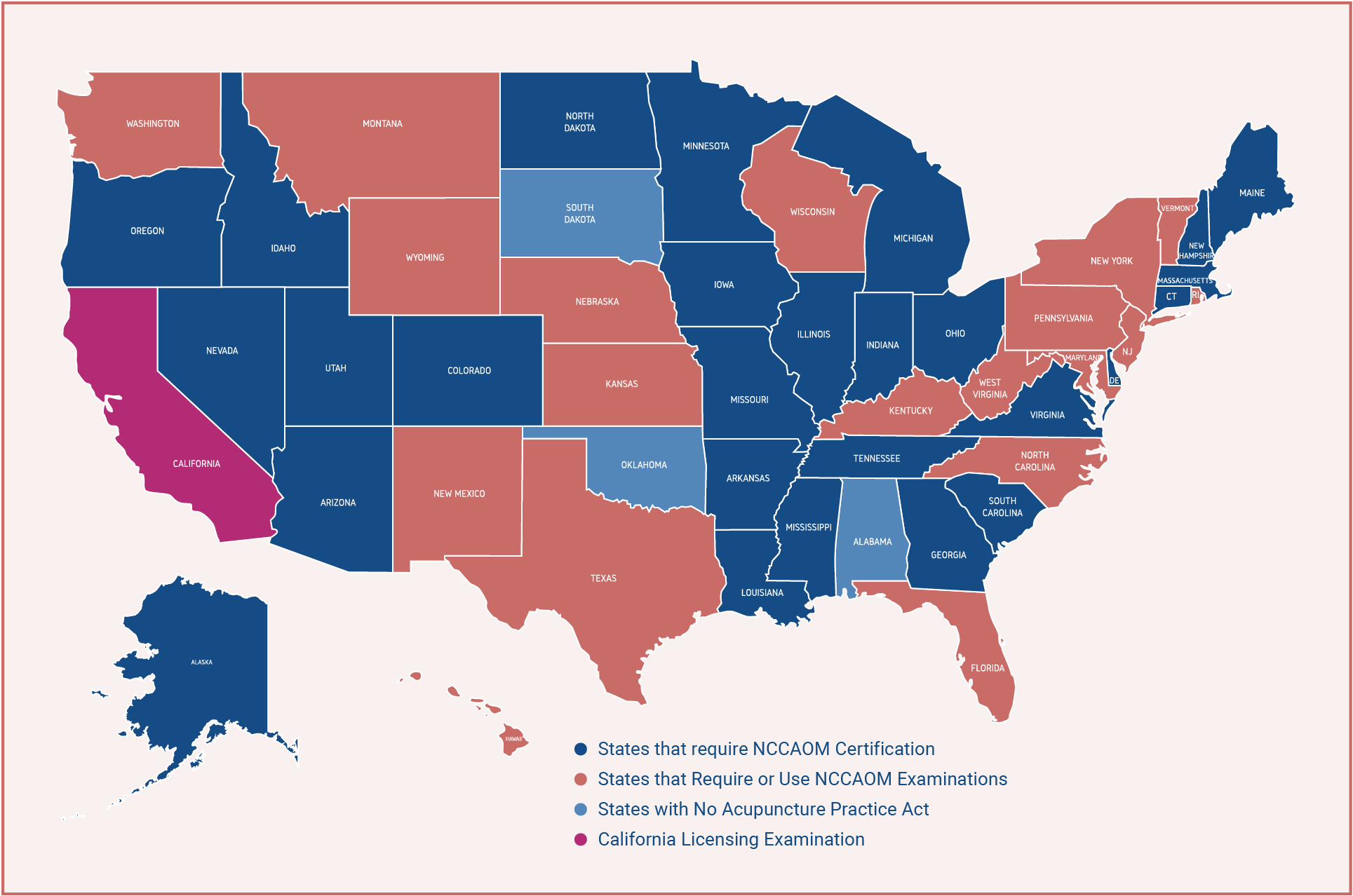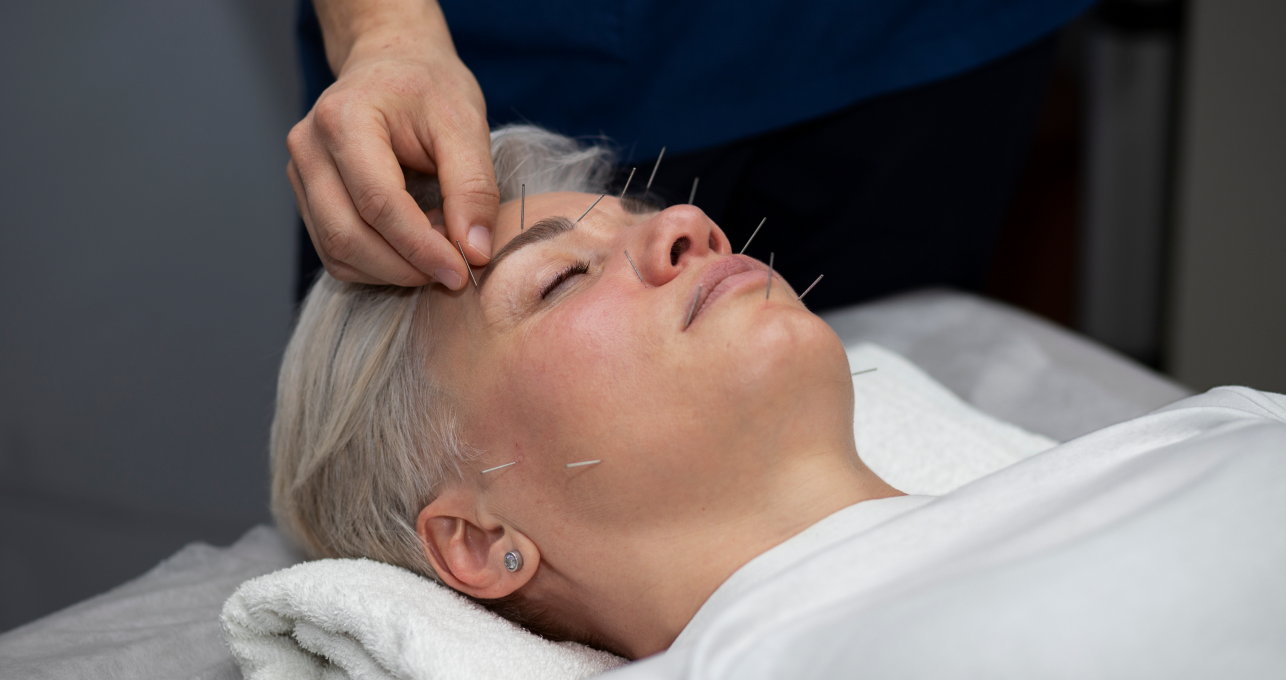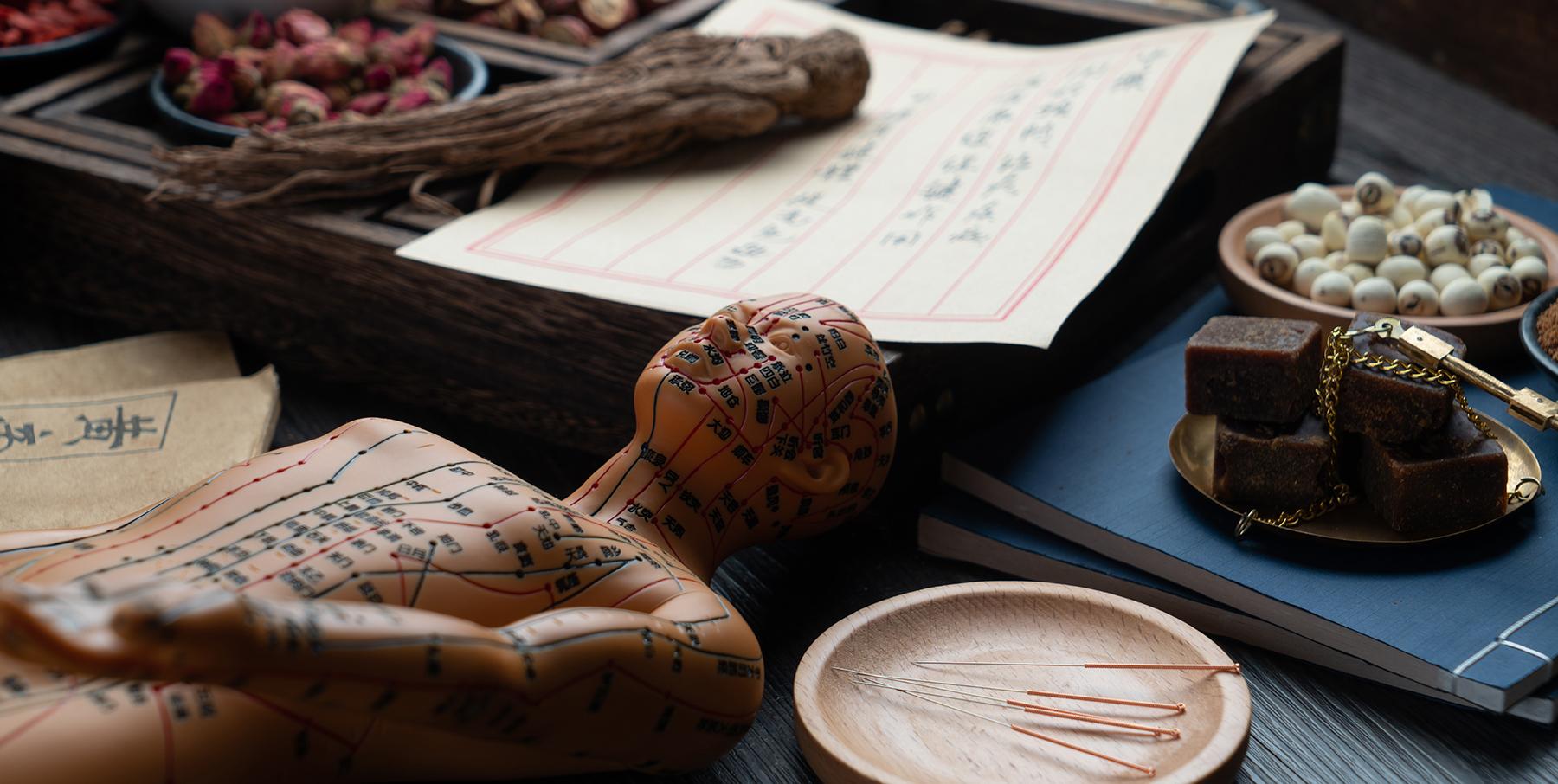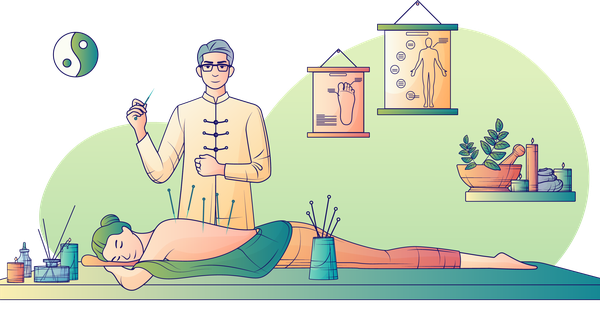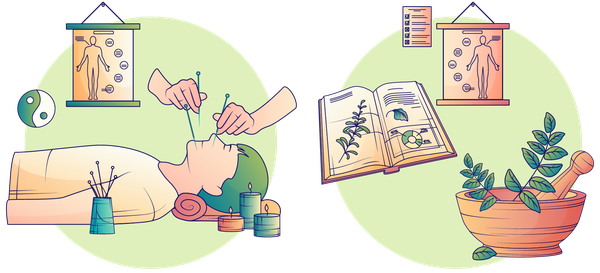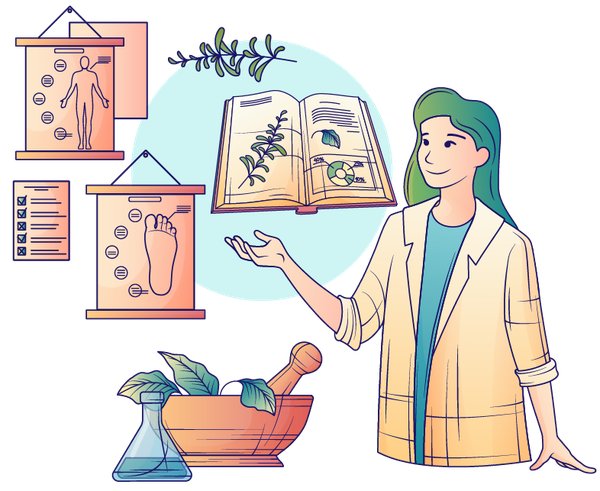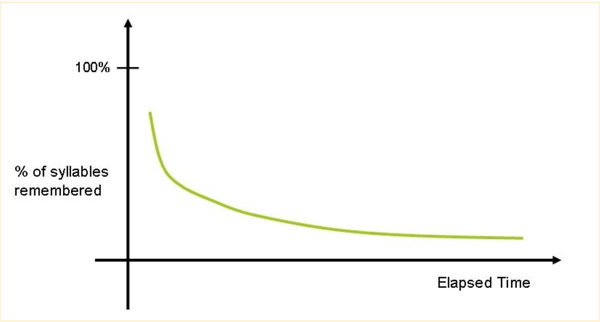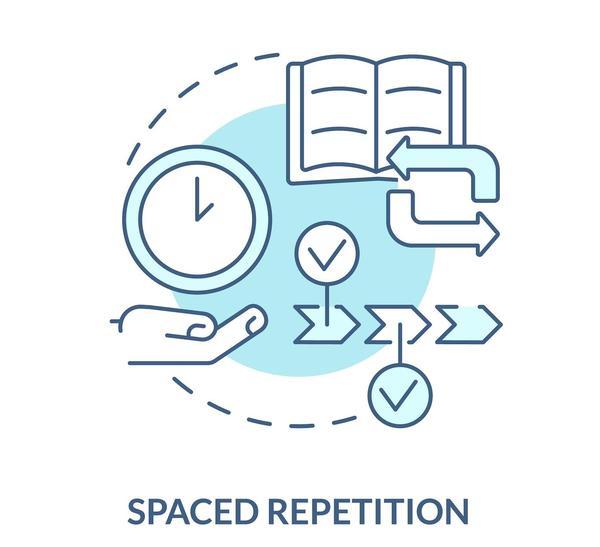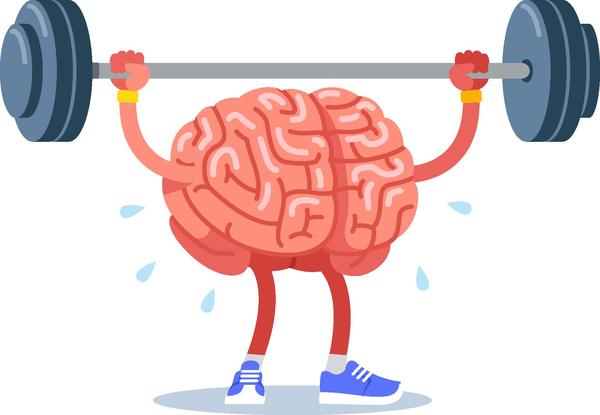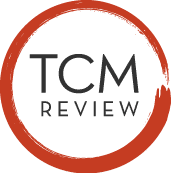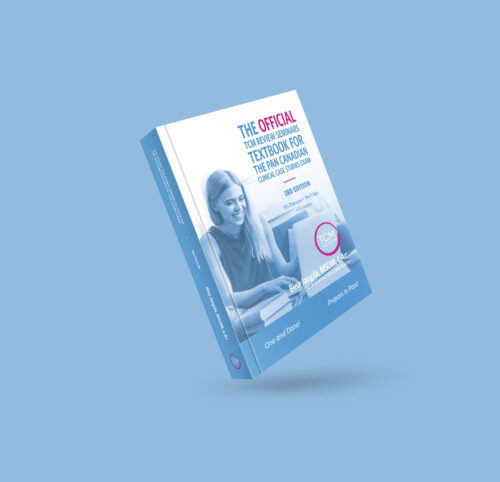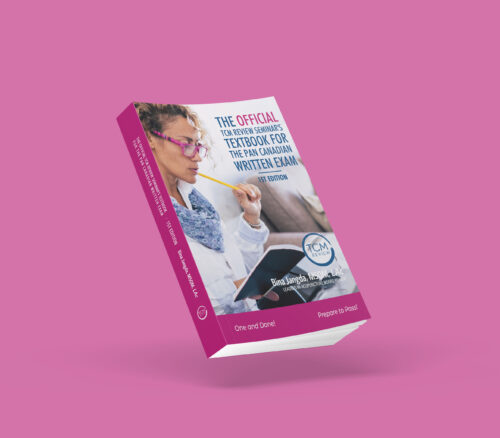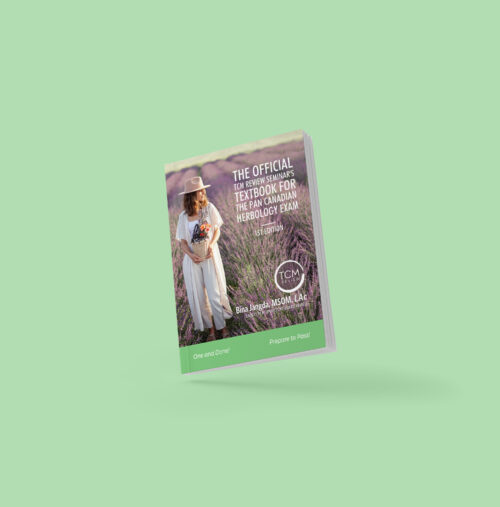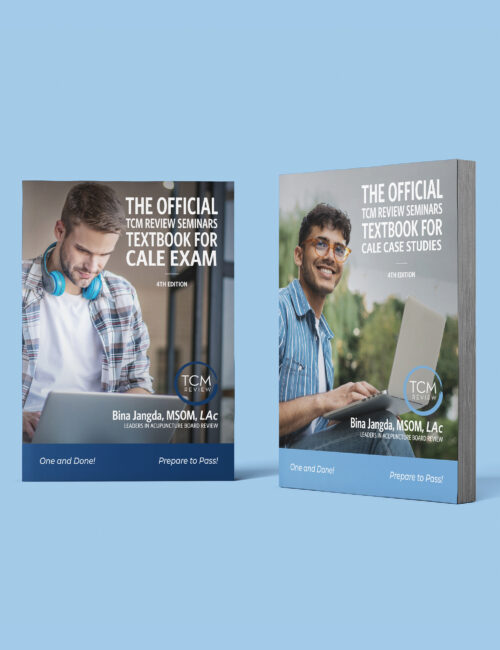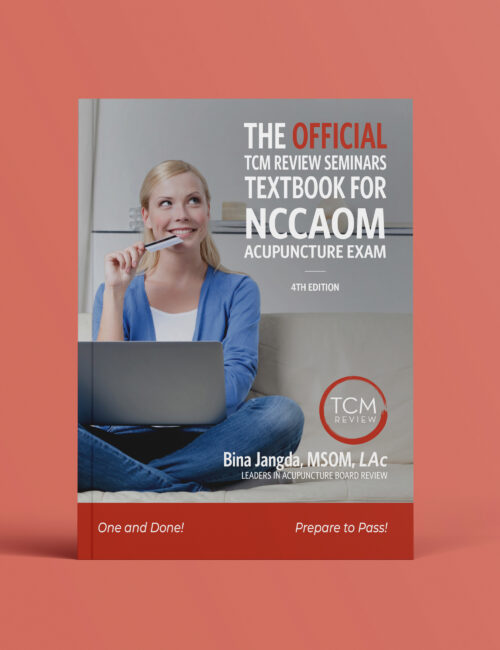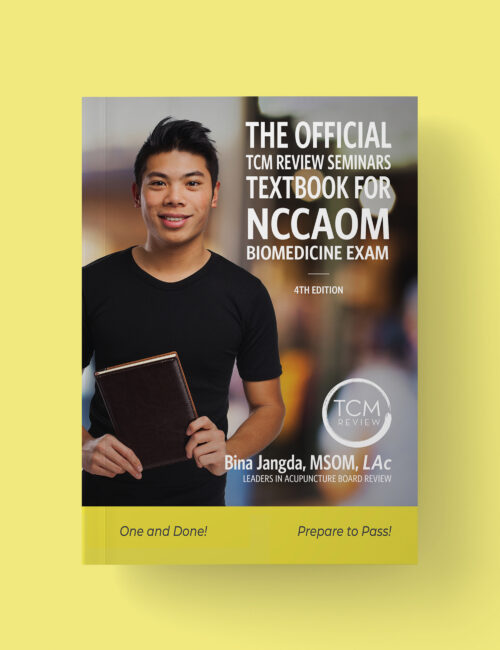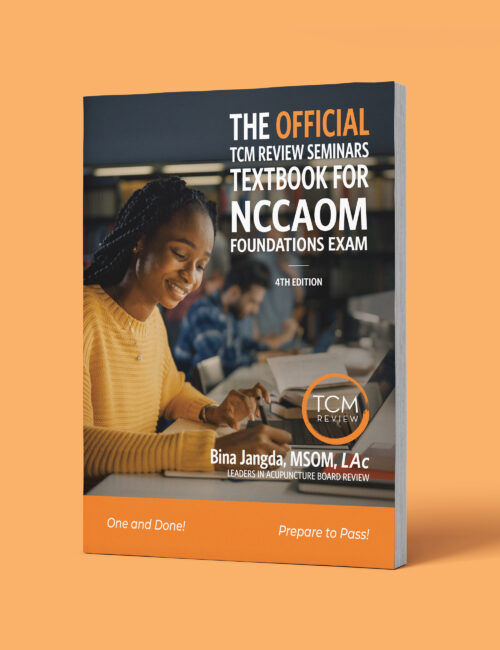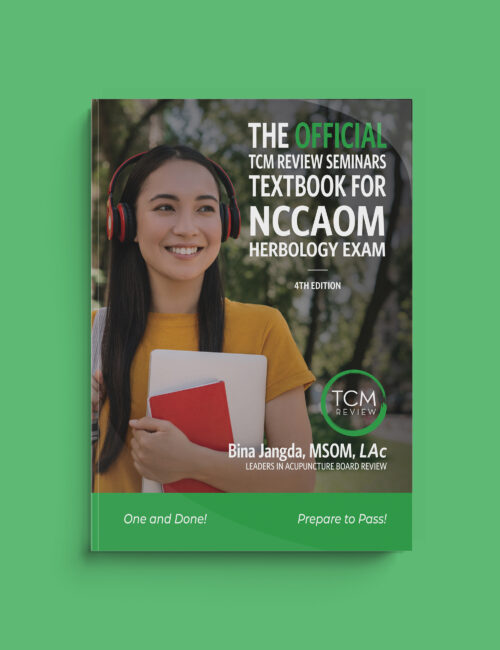Business coaching with Alyssa Dazet
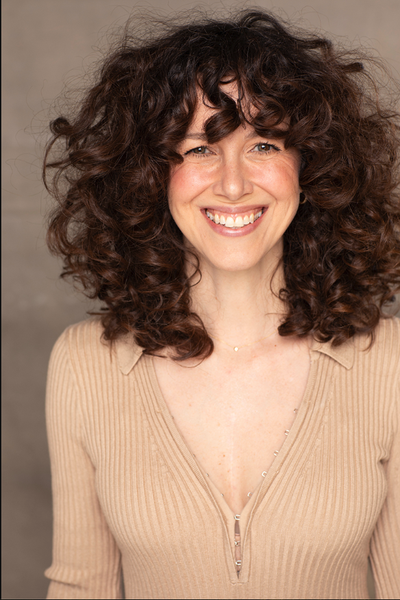 The journey to life as a professional acupuncturist is hugely rewarding. But it does have its challenges—and they don’t stop when you pass your board exams.
The journey to life as a professional acupuncturist is hugely rewarding. But it does have its challenges—and they don’t stop when you pass your board exams.
As you know, I’m passionate about professionalizing our industry. Money can feel like a dirty word in some holistic health communities. But to spread the benefits of Chinese medicine far and wide, it’s vital that we build profitable, energetically sustainable businesses.
I’ve been working with some of the top coaches in the field to create our free Practice Builder Course. And this month, I’m pleased to introduce Alyssa Dazet, founder of the groundbreaking 6-Figure Acupuncturist program.
Alyssa started her journey into acupuncture after surviving open-heart surgery aged just 23. She was on the verge of giving up the profession when she realized that mindset was at the root of her struggles. She made six figures every year since and now, as a full-time coach, brings those skills to thousands of acupuncturists around the world every year.
Those first couple of years after graduating acupuncture school can be really challenging. Tell us about your struggles and how you solved them.
Like so many acupuncturists, I was barely scraping by, lacking confidence, not knowing how to run a business, and having trouble getting patients to return for sessions. I was on the verge of going back to school to become a nurse just to have a steady paycheck. That’s when I hit rock bottom. As a last-ditch effort, I decided to try something different, which was work on my mindset. This changed everything, and that year, my third year in practice, was my first six-figure year.
You started your online course back in 2014. What inspired that decision?
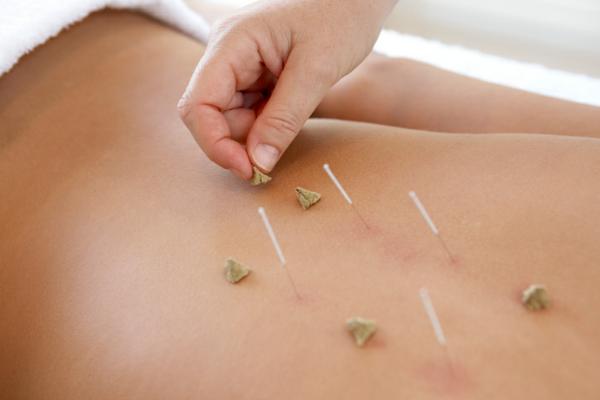
A lot of my colleagues saw my shift from struggling to six figures and started to come to me and ask for help. So, I started to invite them into my office and teach them whatever I could between patients. Everybody kept saying how helpful it was. I had a friend who was an online entrepreneur, who said, “Why don’t you make a course so you can help more people in your profession at once?” I figured it would be a better way to get the information out to more acupuncturists, not realizing it would spread around the world. It’s been this crazy journey ever since.
What is the most common place where new acupuncturists tend to get stuck?
Where people tend to get stuck is in mindset, confidence, and communication. They don’t know how to run a business, how to create treatment plans, how to manage expectations when a patient is questioning the progress of the sessions… Mindset is the root of everything. I can teach someone all the systems and scripts, but until we’ve worked on their mindset, none of that matters.
What are the most common mistakes you see new acupuncturists make from a business perspective?

I’d say the most common ones are offering discounts, trying to do everything on their own and not getting support. Also miscommunicating, not understanding how to communicate, because you have to know how to communicate the treatment plan, how to reschedule patients, and how to answer their questions.
Now, discounting might seem like a natural step for a struggling new practitioner to take. But you’re against it. Why?
Discounts are bad, because you are devaluing your services in the eye of the consumer. You’re devaluing your services and attracting a clientele that’s drawn by the discount. Oftentimes, practitioners are offering discounts, not making enough money, and then burning out. When a practitioner is struggling in their practice there are really a million things to look at that will impact success, other than their fees. For example, their marketing, communication, or practice systems.
If you had to identify one single thing that separates acupuncturists who build successful businesses from acupuncturists who don’t, what would that be?
Systems! That includes systems for your mindset. Because you’re going to have fears and doubts, and you must have a system to navigate your mindset too. You need systems for communicating, systems for marketing, systems for all the basics of running the business. The business should basically run itself through systems and scripts, so you can focus your energy on patient care. Because patient care takes a lot of energy, and that’s where our energy needs to be focused, not on the business. A lot of acupuncturists are leaking their energy on inefficient business systems, and that leads to burnout.
How can a new acupuncturist go about building a client base from scratch?
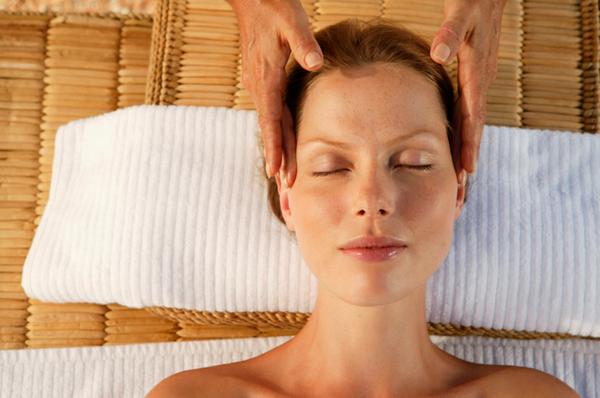
You don’t have to invest any money, it doesn’t have to cost anything, but word of mouth is going to be the most powerful way that your business is going to expand. There are a lot of different ways that you do that but understanding how you communicate and how to engage people in acupuncture conversations is vital. One key point is making sure that everybody in your entire community and world knows that you are an acupuncturist: Oftentimes people are afraid to be seen.
What sort of skills do you cover in your flagship course, the 6-Figure Acupuncturist
The main areas are mindset, business start-up, marketing, practitioner confidence, patient care, and communication. Within those sections there are more advanced areas such as office policies and fine tuning the treatment plan script. Every year there are four months of live coaching classes on Zoom. There is also a year-round support group where practitioners can come with questions. And they have access to everything indefinitely. I love working with them long term because I can see them grow and grow. It’s just beautiful.
Sign up for the TCM Review blog on www.tcmreview.com
Mastering Acupuncture Business Success with Julie Bear Don’t Walk
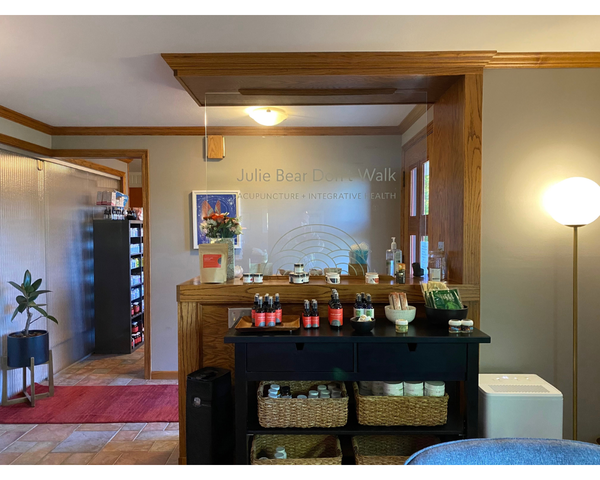
Building a career in acupuncture can feel like climbing a mountain. You think the peak is in sight, then, as you close in on the top, you realize it’s a false summit and you have to find the energy to conquer a new slope. You pass all of the classes for your degree. And then another summit comes into view: your board exams. You pass your board exams. And then a new summit appears: the challenge of building a business that sustains you and provides enough income.
As you know, I’m passionate about helping acupuncturists create rewarding businesses that help as many people as possible. So I’m working with some of the top acupuncture business coaches to bring their expertise to TCM Review, initially as part of our new practice builder course.
This month, I spoke with Julie Bear Don’t Walk, who takes her distinctive surname from her husband, a member of Montana’s Crow Tribe. After growing a one-person TCM practice in the small city of Lawrence, Kansas, to a team that served 150 patients a week, in an all cash practice, she now helps acupuncturists and alternative health practitioners prosper through her coaching business, Lifeflow Consulting.
You closed your practice last year to focus exclusively on coaching. Why was that?
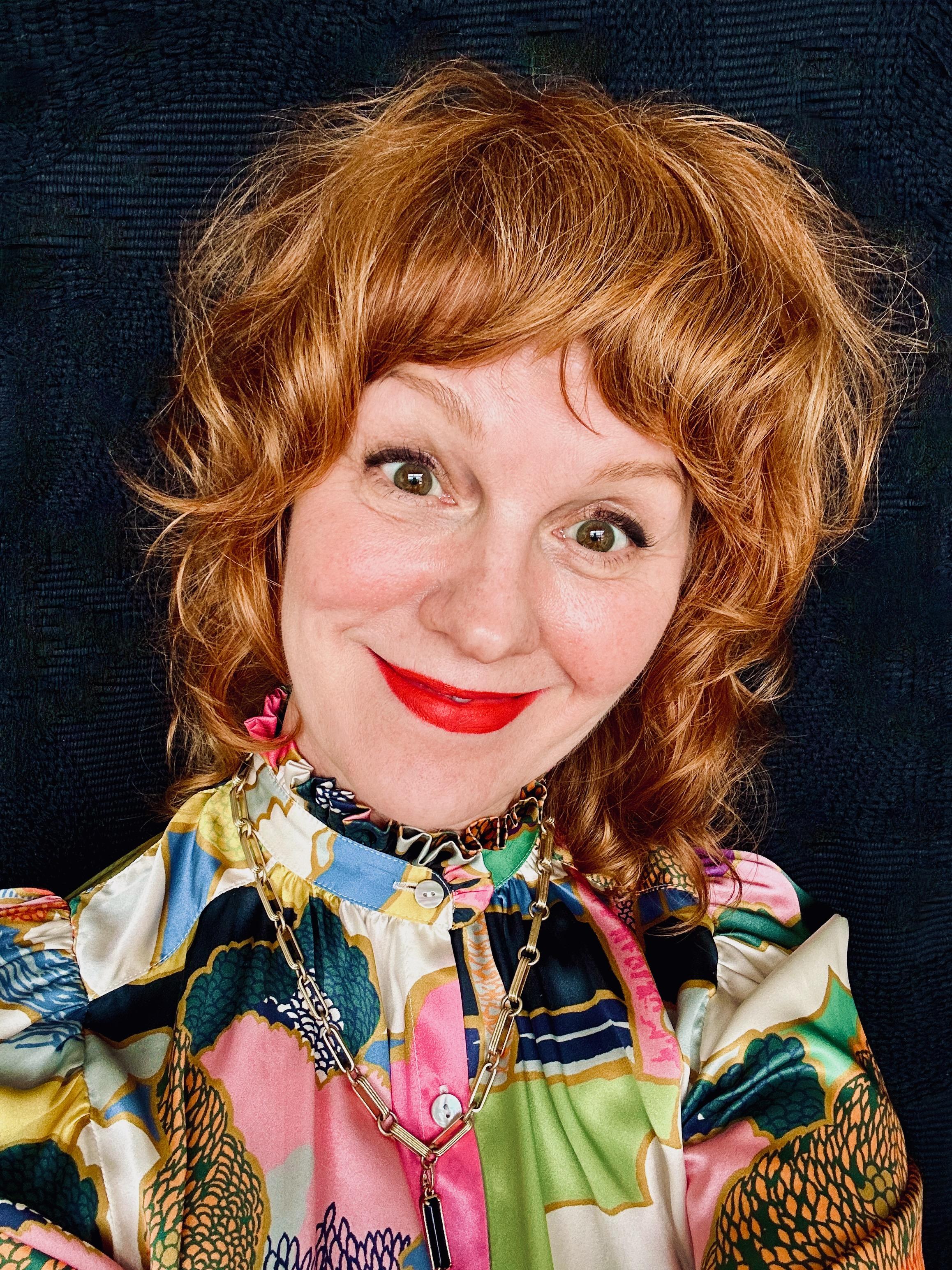 I started coaching because I want to help as many people as possible to get Chinese medicine. I knew that if I could help practitioners help more patients, the impact would be exponential—beyond what my clinic could provide. While my coaching practice grew very organically, my clinic also kept growing. But in the end, I reached the point where I couldn’t grow my clinic anymore and I couldn’t grow my coaching anymore, so I had to make a choice. I help more people to get acupuncture by coaching than I could by directing my clinic, so I made the choice to focus on coaching, because it’s where I knew I could make the biggest impact with our medicine. One of my associates had grown her skill set enough to open her own practice, and she took an associate with her, then I connected my third associate with another clinic in town, so patients still had great care. Ultimately, I listened to the Qi of my business and aligned with that flow.
I started coaching because I want to help as many people as possible to get Chinese medicine. I knew that if I could help practitioners help more patients, the impact would be exponential—beyond what my clinic could provide. While my coaching practice grew very organically, my clinic also kept growing. But in the end, I reached the point where I couldn’t grow my clinic anymore and I couldn’t grow my coaching anymore, so I had to make a choice. I help more people to get acupuncture by coaching than I could by directing my clinic, so I made the choice to focus on coaching, because it’s where I knew I could make the biggest impact with our medicine. One of my associates had grown her skill set enough to open her own practice, and she took an associate with her, then I connected my third associate with another clinic in town, so patients still had great care. Ultimately, I listened to the Qi of my business and aligned with that flow.
What are the most common problems you see people facing when they’ve just passed their board exams and want to set up a business?

I would say the biggest barrier to being successful in business and realizing your purpose of helping people is overwhelm. People are ready to see patients but they have so many questions: Where are they? How do I get them? Once they’re here, what kind of systems do I have? When your body gets into a state of overwhelm, it’s a sympathetic nervous system response: fight, flight, or freeze. You may struggle to do anything; you may respond in a reactive way; or you can get frozen in this doom loop of “I’m not good enough.” People generally work alone, so it’s hard for them to get into a positive feedback loop. Overwhelm is a business killer because it stops Qi flow.
What are the most common misconceptions people have at that early stage?
People tend to assume that: “If I have my office set up, people will show up.” Most schools prepare you pretty well for being an acupuncturist but only have one small class in the whole four years that explains how to do business. Running a business is more than just having a space—it involves marketing, but almost more importantly, it requires you to have systems for patient retention, patient flow, and operations. A business is a body, just like a patient’s body, and you have to have a healthy business organism in order to help people. That means systems of all kinds.
Systems are a real focus in your course for early-career acupuncturists. Why are they so important to success?

Let’s look at it from a larger perspective. Chinese medicine is all about making sure systems are functioning optimally. And when you have a business, it’s the same as a body: You need optimal systems to ensure the Qi flows correctly. I remember, during my first year of practice, I spent every weekend for the whole month of March gathering financial data for my tax person, and my husband was like, “This sucks! Every weekend you’re in a spreadsheet!” When you have systems, the Qi knows where to flow consistently and you don’t have to waste a lot of energy making decisions. Optimal systems grow stable and healthy businesses.
I love that you have a section on ethical patient retention and sustainable relationships with patients. What should beginner acupuncturists look out for?
I was in my early 40s when I first started practicing. I remember the first time that I saw eight patients in a day, and I was incredibly drained by overidentifying with my patients and putting all this pressure on myself to “fix them”. Ethical patient retention is about creating the conditions for collaborative care, not a model where your patient has no agency and fixing them is entirely up to you. You also have to maintain good boundaries, so you’re not available for email consultations between visits and you only discuss patients’ problems within their appointment time.
Do you think there can be a tension between the desire to heal and the desire to build a business, that some people can be so focused on giving, that branding and marketing feel almost inauthentic?

Some people absolutely do feel that business is dirty and acupuncture or Chinese medicine is pure and healing. But they’re part of the same system and if those two things are not talking to each other, you can’t do acupuncture. If your business is not in alignment with Chinese medicine principles, patients will feel that—and they won’t stick around for the long term. But if your marketing is relationship-focused and heart-centered, and you have good, humane systems for retaining patients so that they can reach their health goals, and systems for managing the Qi in your clinic, you’ll find that you help a person with something and then, years later, they come back because they know you helped them in the past. It’s a sustainable Qi and business model truly committed to helping people heal.
Scale is a challenge for every business, but perhaps especially so for something as personal as healing. How can people overcome that?
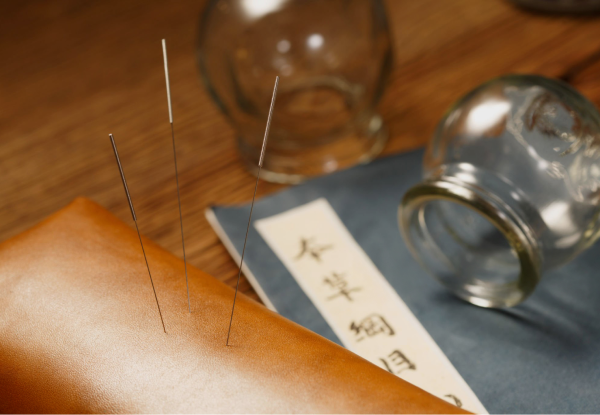
When I was in acupuncture school, I thought that if I could see 28 patients a week I’d have arrived. That was my end goal. By the time I was starting to step out of my clinic, I’d see 28–35 patients in a day. Operational, finance, and marketing systems help you scale, as do the micro-mindfulness systems that I teach my coaching clients to manage the Qi in the treatment room. You can’t scale when you are “drained”. The most common tipping point I see is that many solo practitioners struggle to see more than 35–45 patients a week without administrative support. Once you have somebody scheduling people, taking payment, returning phone calls, changing the linen, and so on, you can stick with two rooms and see 55–60 patients a week, or you can scale up to three rooms and start seeing three patients per hour. I recommend solo practitioners start with one or two patients an hour then add in admin support to grow to helping three or four patients an hour, if your goal is to truly help many people with this medicine. In my clinic, we all saw four patients per hour, and the feedback from patients was that they always thought they were the only person in the clinic. Because it’s about being present and good Qi flow. That’s the real key to scaling. Having systems that allow you to be present, focused, and in the flow. That’s how my practice kept scaling up and growing—and yours can too.
Sign up for the TCM Review blog on www.tcmreview.com
Introducing Practice Builder: Our New FREE Course to Help You Grow Your Business
Over the past year or so, I’ve interviewed a few former students about the mechanics of growing your practice—and your business!—as an acupuncturist. Board exams are a major milestone in your career, and until you’re through they are completely consuming. But what comes after is equally important.

I still remember how I felt when I woke up the day after my licensing exam. I’d spent 10 hours a day studying for my CALE and, back in those days, it was a four to six week wait before you got the exam results. I was still ramped up from studying; I was awash with nervous energy; and I, quite literally, didn’t know what to do with myself.
So, rather than hang in limbo, I decided to treat life as though I’d passed: I worked on business plans, looked at spaces, and tried to get the rubber to hit the road. But taking that next step on the professional journey is hard, and, often, students simply don’t feel ready.
To help our students, past and present, with that challenging transition to working life, TCM Review is collaborating with some of the industry’s top business coaches to deliver a new free course called Practice Builder. And I’ve asked one of the TCM Review team to interview me about it for this month’s newsletter.
What inspired you to create the Practice Builder course?
I have always thought that one of the big setbacks for acupuncture students is the lack of really good quality business education. If they’re given one at school, it often touches on a lot of different subjects without really going deep. My thought was always to provide some business classes that will help set people up once they finish with school and their licensing exams. I get a lot of emails from students after they’ve passed their board exams with questions like: “Should I be an S-Corp or a C-Corp?” or “Should I go work for somebody or should I create my own practice?” I’m hoping clarifying those will help people get started.
Why do you think it is that acupuncture schools offer less coverage of the business side of the profession?
I feel that often schools have limited resources. They have to offer a certain number of hours that are accredited through the Accreditation Commission for Acupuncture and Herbal Medicine (ACAHM), which may not leave enough hours for a robust practice-building course. Then there’s the structure of the academic career track. Usually, if someone’s an academic, they’re working in practice part-time and as an academic part-time. But the coaches that are teaching practice building have all built hyper-successful practices with second and even third revenue streams built in.

What are the biggest gaps in terms of knowledge that you see?
Everything! Everything from how to talk to patients about acupuncture to how to rebook patients: A patient should leave your clinic with a treatment plan and appointments booked for the next six weeks. Often, students will initially overspend setting up their clinics. I remember in my own cohort people were putting in $5–10,000 to build an herbal pharmacy or expensive add-ons to their clinic before they even had any patients booked. There are skill sets such as talking to doctors, networking, and marketing that I’d really like to help students develop.
Who’s eligible to take the course for free?
- Practice Builder is free for all TCM Review alumni and current students, which means students who have taken or are taking the full NCCAOM package, the full CALE package, or the full RAc or RTCMP package. New students and current students will see the course in their dashboards; our alumni can reach out to us, and we’ll also be contacting them individually by email.

Could you tell us a bit more about the coaches?
Sure! Alyssa Dazet, a heart-surgery survivor, built her acupuncture business from zero to six figures in just two years: Her flagship program, the 6-Figure Acupuncturist, regularly helps professionals double or triple their income. Dr. East Phillips has been a professor and speaker in TCM for more than 20 years and specializes in motivating, inspiring, and encouraging practitioners to fulfil their mission on this planet. And Julie Bear Don’t Walk is a licensed acupuncturist and regenerative business coach who grew her own practice to a team of eight and now helps acupuncturists cultivate thriving, sustainable practices through Lifeflow Consulting. For now we have these three amazing coaches on board. I’d like to see the course grow to include others that can offer advice on other aspects of building a practice. I welcome them to reach out to us.
And what does the course involve?
It’s a short course, with about five hours of practice-building videos. Julie Bear Don’t Walk talks about directing the Qi of your career as an acupuncturist, helping you plan your ideal professional journey and set clear intentions for your future. Alyssa Dazet has created a 90-minute masterclass covering seven key strategies that six-figure acupuncturists use. And Dr. East Philips has produced two videos, one on how to scale your business and one on how to generate $250k in 12 months or less. The basic idea is that students have a lot of material to start thinking about building their own practice, about the systems and processes that will serve them as they grow.
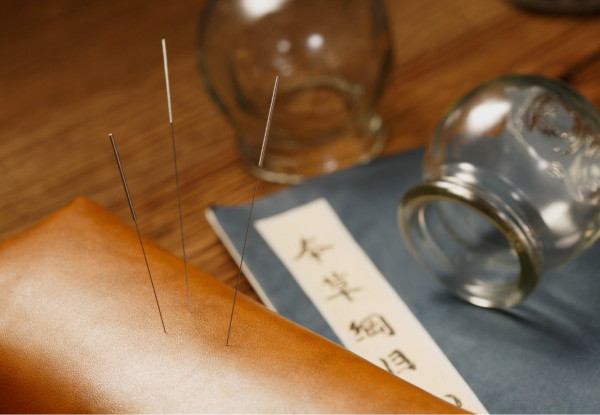
And what’s the end goal??
It’s all about growing the field. I love this medicine; it’s a beautiful medicine; and we definitely had a setback during the pandemic. I’d like to increase the rate of people who’ve graduated from acupuncture school who are still practicing in five years’ time. If we can ramp up those numbers that’s going to be a massive change for the profession. Over the next few months, we will be rolling out more paid courses that will hopefully be eligible for CEUs. We are still ironing out those details. Ultimately, I’d like to see TCM Review supporting the business aspect of the profession in the same way that we’ve supported the academics.
Sign up for the TCM Review blog on www.tcmreview.com
How Neuroplasticity Can Help You Master TCM Concepts Faster
Passing your acupuncture licensing exam can feel overwhelming. With thousands of herbs, acupuncture points, and diagnostic patterns to memorize, the sheer volume of material may leave students feeling like they’re swimming against the tide. But what if I told you that you could rewire your brain to retain this information more efficiently? Harnessing the power of neuroplasticity can be a game-changer for acupuncture students preparing for their board exams.
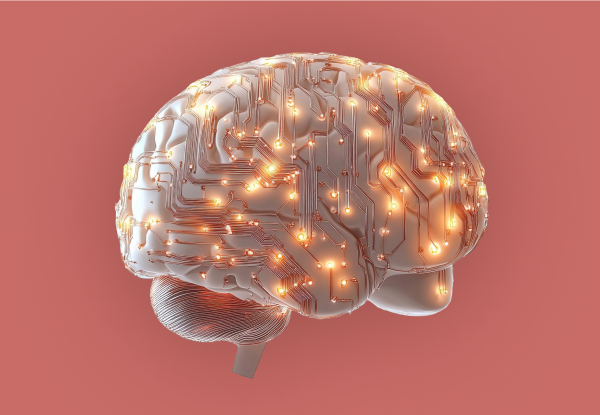
What is Neuroplasticity?
Neuroplasticity refers to the brain’s remarkable ability to reorganize itself by forming new neural connections throughout life. This adaptability is how we learn new skills, build habits, and recover from injuries. When you repeatedly engage in a new activity, your brain strengthens the neural pathways associated with that activity, making it easier and faster to recall information over time.
For acupuncture students, this means that studying doesn’t have to feel like a Herculean task. By understanding how your brain processes and retains information, you can optimize your study sessions and improve your recall on exam day.
How to Use Neuroplasticity to Master TCM Concepts
Here are some practical ways to leverage neuroplasticity to master Traditional Chinese Medicine (TCM) concepts faster:
1. Spaced Repetition: Strengthen Neural Pathways
One of the most effective ways to build long-lasting memories is through spaced repetition. Instead of cramming all your herbology or acupuncture point studies into one session, space out your reviews over time. Repeated exposure to the same material at increasing intervals strengthens the neural pathways responsible for that knowledge.
For example, when learning the Eight Extraordinary Vessels, review the pathways and clinical indications periodically. Similarly, when studying formulas like Si Jun Zi Tang (Four Gentlemen Decoction), review the herbs, functions, and indications at regular intervals. This method ensures that your brain has time to solidify the connections, making the information stick.
2. Engage Multiple Senses: Create Rich Neural Networks
Studies show that engaging multiple senses during learning enhances memory retention. When you’re studying TCM concepts, don’t just read the text—speak it aloud, write it down, and visualize it.
For instance, when memorizing the Five Element correspondences, draw diagrams that connect each element to its associated organ, color, emotion, and season. Trace meridians on your body while reciting the acupuncture point names and their functions. This multisensory approach activates different areas of your brain, creating a richer network of connections.

3. Make It Meaningful: Leverage Emotional Connections
The brain is more likely to retain information that has emotional significance. Find ways to make your study sessions meaningful. Connect TCM concepts to real-life experiences or patient cases to make them more relevant and memorable.
For example, instead of memorizing the symptoms of Liver Qi Stagnation in isolation, think about how this pattern manifests in someone experiencing chronic stress. Consider the emotional aspect of the Liver’s role in maintaining the smooth flow of Qi and how emotions like frustration or anger can contribute to stagnation. Linking theory to practice enhances your understanding and recall.
4. Use Visualization: Build Mental Models
Visualization is a powerful tool to activate neuroplasticity. When learning complex TCM theories, create mental images or stories that connect the concepts. For example, visualize Qi and Blood as a river system flowing through the body, nourishing the organs and tissues. Imagine blockages in this river representing stagnation or deficiency patterns.
When studying herbal formulas, picture the herbs as a team working together to address specific imbalances. For instance, in Ba Zhen Tang (Eight Treasures Decoction), visualize the Qi-tonifying herbs replenishing energy and the Blood-nourishing herbs restoring vitality.

5. Practice Active Recall: Strengthen Retrieval Pathways
Active recall is a technique that involves testing yourself on the material rather than passively reviewing notes. This process strengthens the retrieval pathways in your brain, making it easier to access the information when needed.
Create flashcards with TCM questions or take practice quizzes. For example, test yourself on the Six Stages of Disease from the Shang Han Lun or the Four Levels of Disease from the Wen Bing Xue. The act of retrieving information reinforces the neural connections, making recall faster and more reliable.
6. Integrate Yin-Yang Theory and Balance Your Study Approach
Studying TCM concepts requires balance, much like the foundational Yin-Yang theory. Overstudying without breaks can lead to mental fatigue (a Yang excess) and burnout (a Yin deficiency). On the other hand, too much rest without active engagement can lead to underperformance.
Apply Yin-Yang principles to your study schedule. Think of Yang learning as active and dynamic—writing out notes, creating flashcards, or making study tools. This is the more effortful, engaged side of learning. Yin learning, by contrast, is passive and restorative. For example, listening to TCM Review’s comprehensive video lectures while driving, cooking, or doing dishes allows the material to seep in more gently, without the cognitive load of active study. This balance ensures that you are continually reinforcing your knowledge without exhausting your mental energy.
By incorporating both Yin and Yang approaches to studying, you align your learning process with TCM principles of harmony and balance, maximizing both your retention and your well-being.
Why Neuroplasticity Matters for Your Exam Success
The beauty of neuroplasticity is that it offers hope to every student, no matter where they are in their study journey. Even if you’re feeling behind or struggling with certain concepts, your brain has the capacity to adapt and improve with intentional practice.

By leveraging neuroplasticity, you can:
- Retain information more efficiently
- Reduce study burnout
- Improve exam performance
Remember, mastering TCM isn’t about cramming as much information as possible into your brain at once. It’s about creating strong, lasting neural connections that allow you to retrieve that information with ease when it matters most—on exam day.
Embrace your brain’s capacity to change, adapt, and grow. With the right strategies, you can pass your acupuncture licensing exam and build a successful career in Traditional Chinese Medicine.
Sign up for the TCM Review blog on www.tcmreview.com
TCMReview.com vs. TCMTests.com
Understanding the differences between the two sites
I pride myself on good relationships with other professionals in the acupuncture community, so it’s taken me a while to accept that I need to address a misleading post published by a competitor. It’s called “Which should you choose: TCMTests.com or TCMReview.com?” and purports to compare our two sites. Somebody finding the post from a search engine might believe it was written by a neutral third party rather than one of the sites it’s comparing.
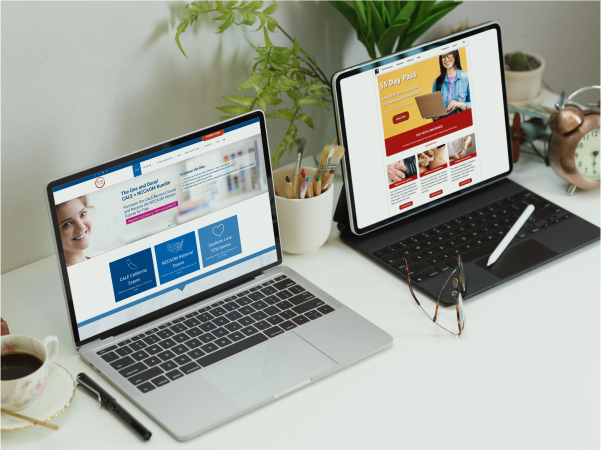
Both TCM Review and TCM Tests have been around for a very long time—I’ve spent more than 30,000 hours helping acupuncturists pass their board exams—and we are both professionals with good track records. But TCM Review is hands down the most comprehensive review platform available for North American acupuncturists preparing for their licensing exams, and in my opinion this blog post is just plain misleading.
So here’s a rather more straightforward comparison of what our two sites have to offer. In my opinion, TCMReview.com is much more comprehensive.
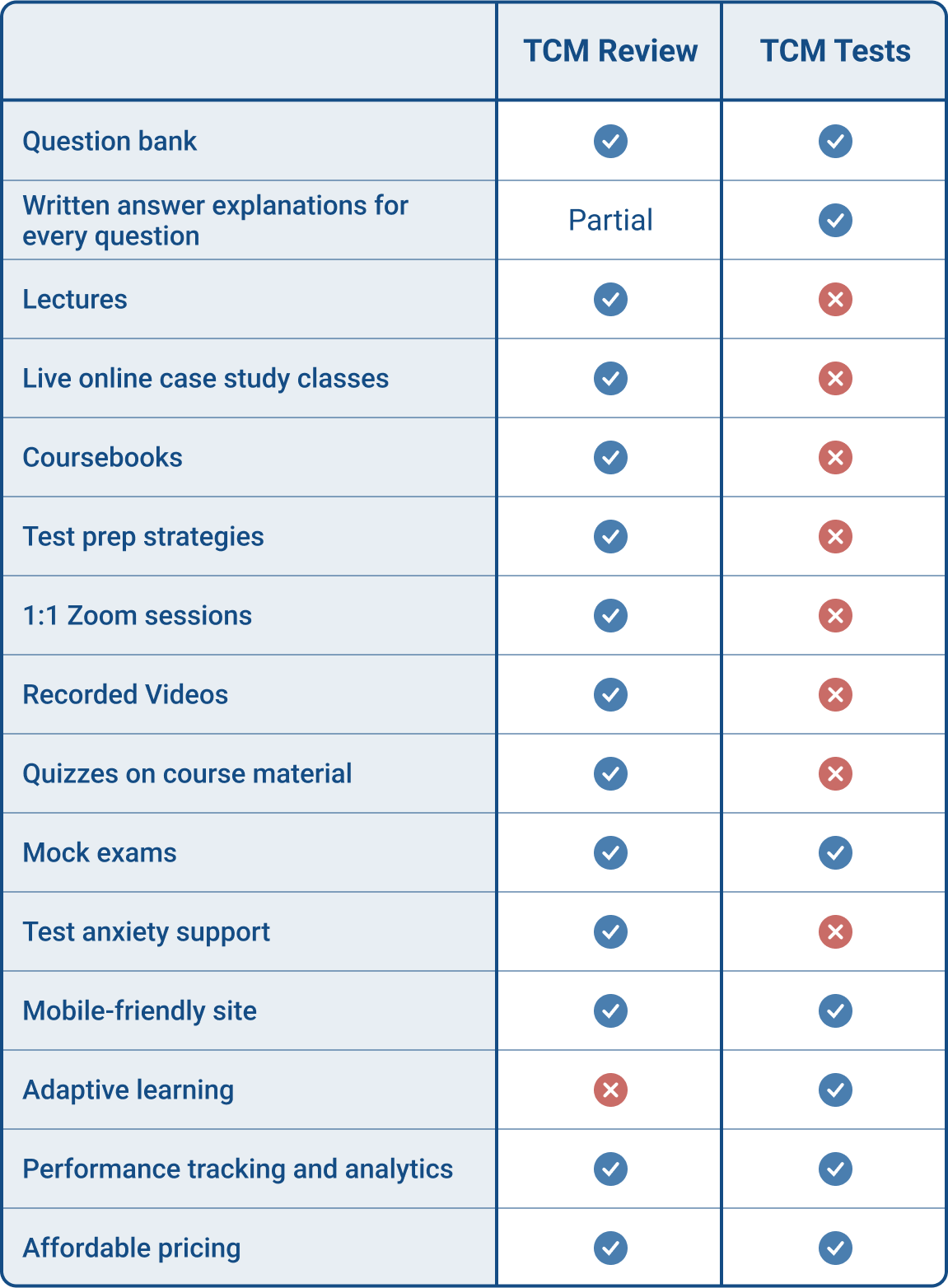
TCM Review is a full review course with the learning materials and support many students find they need to transition from the clinical knowledge they’ve learned in school to the textbook knowledge they need to pass their board exams; TCM Tests is a question bank with answers.
Why we don’t offer adaptive learning or written answers for every question
While TCM Review’s offer is much more comprehensive than TCM Tests, you’ll see that there are two elements TCM Tests offers that we do not. TCMTests.com provides written explanations and rationale for the answers to all their questions. That’s essential to their business, as the primary teaching tool on the site is the question bank. I’ve opted to only provide detailed feedback on the answers for our biomedicine questions and a few other areas that have proven to be hot topics for our students.
Why? Because we offer a full review course and our test bank questions form part of that course. We organize our material as classes: You watch the video first and then you take the quiz. The explanations and references and testing strategies and comparative work are covered in the lecture videos, so you can simply refer back to the material for the answer explanation. Unlike TCM Tests, we also have one-on-one support available if you’re stuck.

You’ll also notice that TCMReview.com does not offer adaptive learning, while TCM Tests does. Now, there are many professions out there that offer adaptive testing for their licensing exams. In acupuncture, out of the three board exams in North America, it’s only NCCAOM that offers adaptive learning, and even then not 100% of the time.
I explored offering adaptive learning on our site, so I talked with a few test prep companies in other fields. When I asked why they don’t offer adaptive testing, every single one replied that what’s important is not the test format but that students learn all the necessary material for their exam. So, we put our focus on content: live online classes, writing new test questions, weeding out old material, creating new videos, and lots and lots of testing strategy.
A note on pricing
Both TCM Review and TCM Tests offer affordable pricing. However, the two businesses have different pricing structures, so it’s difficult to directly compare the prices of TCMReview.com and TCMTests.com. At TCM Review, our courses tend to be longer and we offer more material: Per day, based on these longer courses, we’re usually cheaper than TCMTests.com. But TCMTests.com offers shorter-term access packages, which have a lower overall cost, because they’re shorter.

I’d invite any prospective students to research not only pricing but pass rates and testimonials for themselves. When people use our materials as intended and maintain a 75% or better on their quiz site dashboard, well over 90% of them will pass their boards first time.
Now, I would never badmouth a fellow business. Some students use both TCM Review and TCM Tests; others may only want a test bank of questions, and in that case TCM Tests will be right for them. Everybody has their own opinion on how best to prepare for their acupuncture board exams, but I’d hate to find prospective students coming away with a false impression of a passion project that I’ve worked on for more than 16 years now.
If you’re a current student or a prospective student and would like to know more about what we do and what’s behind our exceptional pass rate and the heartfelt and genuine testimonials on our site, you can always email me: bina@tcmreview.com.
Sign up for the TCM Review blog on www.tcmreview.com
Introducing Nancy Irwin, Therapeutic Hypnotist
Maybe you’re already falling asleep to Nancy Irwin’s honeyed tones, or maybe you’ve yet to discover her Georgia peach of a voice. But the Atlanta-born therapeutic hypnotist and clinical psychologist recently joined the TCM Review community, recording a script that will help even the most nervous student enter the room for their board exams feeling calm, confident, and in control.
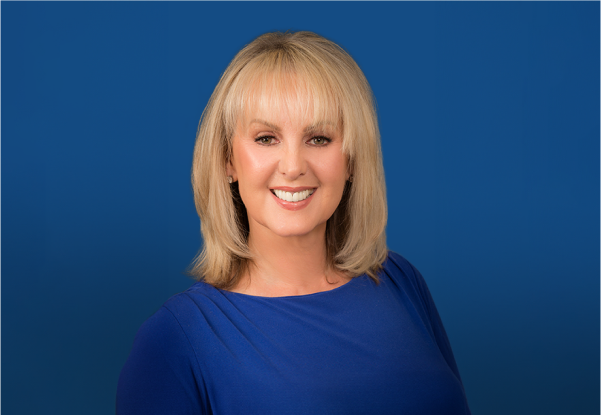
I sat down with her to learn a little more about her extraordinary personal journey from opera singer to stand-up comedian to certified healer and media fixture with three books under her belt. We also spoke about test anxiety, an area where she has both personal and professional experience, how to use her script, and other mental techniques you can use to put yourself into the zone and pass your board exams first time.
Our conversation has been lightly edited for the blog.
Tell me how you became a clinical psychologist?
My bachelor’s and master’s degrees are in opera performance, but I wasn’t good enough for the big time, and I didn’t want to teach. I was a standup comedian for 10 years, which took me to New York City, and then to Los Angeles. I did well, but when you’re a comic, you only work about 30 minutes a day, so I started volunteering at a shelter for sexually abused teenagers. That woke up the healer in me and prompted me to go back to school and earn my doctorate in clinical psychology, specifically treating trauma.
And where did therapeutic hypnosis, or hypnotherapy, come in?
Like a lot of people, I originally thought hypnosis was this silly thing I’d seen in comedy clubs, stage hypnosis, where they make people flap their arms and squawk like a chicken. But when I studied it professionally as part of my graduate degree, I discovered Dr Milton Erickson, who was a psychiatrist and brilliant hypnotherapist, and got my certification in hypnotherapy while I was completing my doctorate. I don’t recommend going to two schools at once, but somehow I did it, and they dovetailed together.

So, the people in the comedy clubs are not true hypnotists?
Stage hypnotists are indeed real and fully trained. They simply choose to use their skills for entertainment purposes, not healthcare. A lot of people think hypnosis is making people do something. But it’s not mind control. The people in the comedy clubs who go on stage want to be hams on stage. They want to sing like Elvis or squawk like a chicken or whatever the routine calls for, and stage hypnotists are trained to read body cues and identify someone who’s keen to perform. I get calls all the time: “My husband needs to quit smoking!” I say, “Well, does he want to quit smoking?” and they say, “No, but he should,” and I’m like, “Save your money and your time.” I can’t make anybody do what they don’t want to do, but if they want to quit, I can certainly facilitate the process and allow them to stop that habit
Well, all our students want to pass their board exams, which puts them in a good spot. How best can they use your script to facilitate that?
It’s most powerful to close the eyes and listen to it right before you fall asleep, because we all pass through the hypnagogic state on our way to sleep at night. There’s a passage of a few minutes where we’re winding down, we’re slowly checking out, and that’s a really valuable, nutritious time, because your brain waves slow down into big, fat, wide waves that are highly receptive to your desired new programming. So, listen to this recording every night as you’re falling asleep, ideally starting at least three weeks before your exam. Your brain will baste all night long in your desired thinking, and you’ll wake up every day more excited to do your practice test and watch your scores increasing.

Tell me about your Inner Winner concept and how it can help with test anxiety.
We all have an Inner Winner, an ideal self. And it’s actually really easy to get in touch with that. We make it hard, because we live in such a chaotic world filled with noise and stimuli. You need to go within and be quiet and listen to that small voice within that is always, always right. Ignore your inner critic. If you hear, for example, your mother, your father or some teacher saying, “You’re not good enough,” that’s the inner critic. Let that pass, and then listen to that small, quiet inner voice. Obviously, all your students have that inner voice or they wouldn’t have come this far, so you want to fan that flame, allow your Inner Winner to guide you along the way, and trust that you can pass.
What other advice would you give for students struggling with test anxiety?
They can double up by listening to the recording first thing in the morning as well as last thing at night. Or another wonderful technique is to write before you listen to the recording at night. Write out in your journal exactly how you’d like to feel on the day, exactly how you’d like to move through each question. Writing a Hollywood ending for yourself is a great self-hypnotic technique. Write out how you see yourself walking in there, relaxed and calm but excited, and receiving your results and jumping for joy and calling your loved ones. If you write out your happy ending and then listen to the script, that’s going to doubly reinforce your confidence that you are getting the results you want.

And what about on the day of the test, because that’s usually when the anxiety peaks?
This advice is going to sound nuts, but, boy, it works. When you wake up, throw back the bedcovers, open the blinds, and go, “Yay! I get to take my test today!” A lot of people shrink, and their bodies start closing up, but you want to take the opposite action. Even if you feel like you’re faking it, the mirror neurons will kick into play. After that, put on clothes that make you feel not only comfortable and appropriate for your exam but powerful. And, of course, eat foods that allow you to minimize brain fog.
One last question: Why would you say the board exams are so challenging for test anxiety?
Well, there’s usually a lot on the line for an individual. Your dreams are about to come true, and you have to take this final step, so that can foment this huge expectation and pressure. It’s like being a baseball player at the bottom of the ninth: You feel like you have to perform well. But what you want to do is allow yourself to focus on, “Look, you did well enough to complete your studies and you had a lot of minor tests. Now, this is one more step on your pathway to allowing your dreams to come true.” It’s adjusting your thinking and embracing it as just another step along the way.
You can listen to Dr. Nancy Irwin’s script through your student portal with an active membership. Login to your student account, go to the support page, open up the first tab called “Hypnotherapy for Test Anxiety”, and follow the link for the script. Read more about Dr. Nancy Irwin at her website, drnancyirwin.com.
Sign up for the TCM Review blog on www.tcmreview.com
Career Focus: Ra Adcock, San Francisco, California
Many early-career acupuncturists struggle with self-doubt, and I often hear from students who are worried about whether they’ll ever earn enough to repay what they have invested in college—let alone have a comfortable life.
But acupuncture is more than a craft, more than a science, more than a profession. It can also be a business, and a successful one at that. That business can take many forms, inspired by an individual’s passions, interests, and expertise, and so I’m showcasing a diverse range of acupuncture professionals every other month.
This time, it’s my pleasure to introduce Robyn “Ra” Adcock, who studied for her CALE with us after taking her masters at Acupuncture & Integrative Medicine College, Berkeley, and her doctorate at the Pacific College of Health and Science. As director of integrative medicine at UCSF Benioff Children’s Hospitals, she is bridging the gap between western biomed and TCM therapies. She also recently spearheaded a successful campaign to keep acupuncture accessible to patients who depend on California state medical benefits.
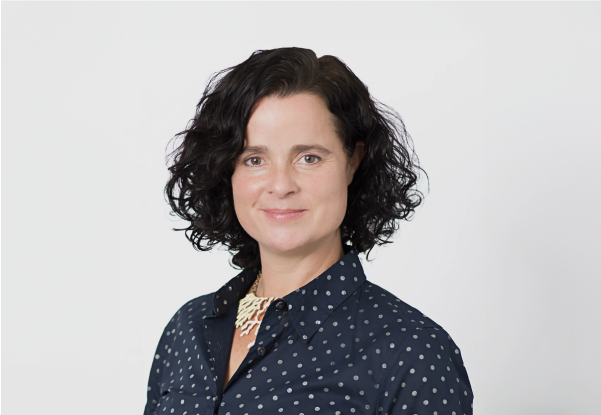
What drew you into the acupuncture profession?
Like so many people in the world of Chinese medicine and acupuncture, what drew me in was a positive personal experience that was compelling enough to inspire me to learn it and share it for the benefit of others. In my case, it was a martial arts injury, a hamstring pull that would not heal until I tried acupuncture. I always wanted to study medicine. I was pre-med in college, but I wanted to get some business experience before I went to medical school. In the end, I did business, I went off the grid, I had kids, I homesteaded, and, at 40, I decided it was time to go back to medical school and chose to study acupuncture.
How did TCM Review help when it came to take your CALE?
I wanted to pass my licensing exams on the first try, and I knew that a class like TCM Review would do more than just prepare me for that exam. You need to be smart at how you take a licensing exam, because there are strategies unique to this type of standardized test. I wanted to learn those strategies, but I also felt the class would help consolidate some of the primary knowledge that I wanted to bring forward into my practice, and that’s absolutely what happened. I’m a single mom; I didn’t have a long, luxurious time to study; so I needed to study smart. TCM Review gave me the chance to focus, to study efficiently, and to work smarter, not harder.
What do you specialize in and how did that specialism come about?
My primary two areas of specialty are pediatrics and hospital-based care. Within that, I’m a generalist. I do pain management; I do palliative care; and I also do oncology, neurology, neonatology, acute care, intensive care, bone marrow transplants, solid organ transplants, disordered eating, migraines… You see quite a diverse patient population under the realm of pediatrics and hospital medicine.
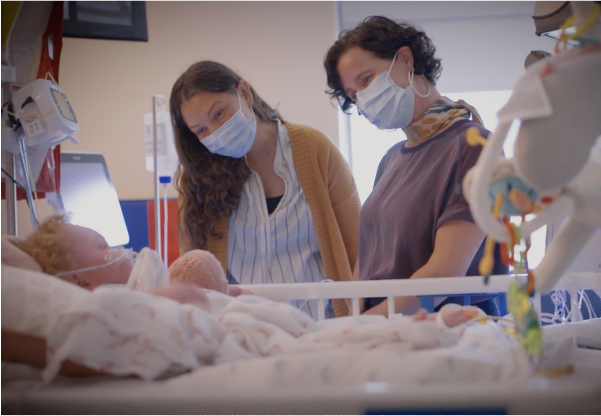
What was your path to your role as director of integrative medicine?
My start at UCSF was through teaching qi gong to the staff at a retreat while I was still a student. The next step was creating a pop-up acupuncture clinic at another staff retreat. My benevolent Trojan horse for bringing acupuncture into the hospital was dosing the staff in the beauty, gentleness, and effectiveness of the medicine, because I knew then they would be fighting to have this for their patients instead of feeling threatened by it. And that’s exactly what happened. A staff acupuncture position was created; I was asked to apply; and I got the position. And from there, I worked really, really hard to develop and create an acutherapy service.
Why do you call it acutherapy?
I call it acutherapy because acupuncture is a terrible word. The word “puncture” creates a barrier to care for a vast majority of patients of all ages, because their experience with needles has been painful. The word “acutherapy” complements the other therapies offered in a hospital, deemphasizes the one procedure of needles, and focuses instead on the acupoint and channel system of the body.
And how did acutherapy lead to integrative medicine?
About four years in, a change in structure at UCSF allowed integrative medicine to become its own division of medicine. They sought a director of integrative medicine, and I applied for it. I now oversee all the therapies that fall under integrative medicine. That includes a robust team of massage therapists and acupuncturists, but it also includes other services like aromatherapy, biofeedback, electric stimulation devices, and clinical hypnosis. Our list of therapies is growing as we continue to find evidence-based therapies that we can deliver ethically, responsibly, and efficiently at the hospital.
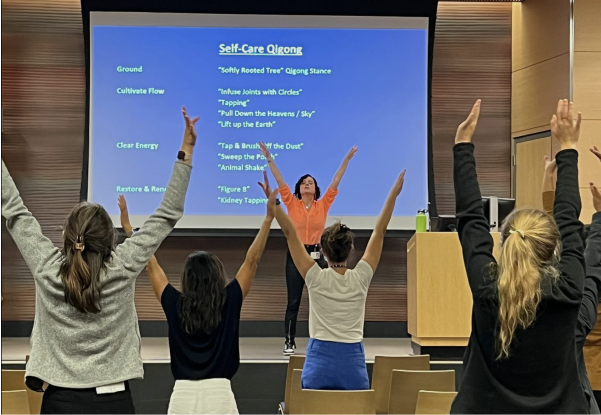
What are the challenges of working within a western biomed context?
The biggest challenge has been a lack of awareness and education about these therapies, why to use them, what they can benefit, who should be eligible, who’s not, what outcomes to expect, and how to talk about them in a proper way. I’ve had to do a lot of presenting, lectures, and grand rounds for different medical services at different hospitals, because the majority of providers in a western setting know next to nothing about Chinese medicine.
And what are the key rewards?
How much it helps the patients! I have these moments where I just think: “This can’t be possible, that touching a point on a baby’s ear can bring down their heart rate by 30 beats a minute, when otherwise they would have to use very heavy sedation medication to get the same result.” I think: “How can doing an acupressure treatment with a patient help them get over nausea for chemotherapy when even the strongest anti-emetics are not working?” This medicine is so brilliant, so filled with wisdom.
What career advice would you give to anyone taking their board exams today?
Trust your natural areas of interest or passion or inclination in the medicine. This field is very big and flexible, so don’t think you have to abandon the things you love. Instead, find ways to incorporate them into your practice. Bring everything that you are and everything that you’ve done to this medicine. Enrich the medicine with your love, passion, identity, and experience, and know that this medicine is big enough to take that and let that transform and be expressed.
Money Talk
Q: How many patients do you see a week on average?
A: 25.
Q: What is your annual turnover?
A: My salary is more than $150,000.
Q: Can you live comfortably on that?
A: I’m a single mom with two children in Marin County, California, and I make enough to live comfortably here.
Q: How financially satisfied are you with your career?
A: I’m never fully satisfied financially. I believe I should be paid a lot more than I am.
Q: Have you ever taken business classes or worked with a coach?
A: No, although I have a background in business from New York City.
Why Should You Choose TCM Review Seminars?
There are a few different acupuncture board exam review sites out there, and I’m sometimes asked what makes TCM Review Seminars different, and why people should choose us. So, after spending almost 20 years helping acupuncturists pass their board exams, I thought I’d put together a simple point-by-point explanation of why you should choose TCM Review Seminars rather than another site.

TCM Review Seminars is the most comprehensive review platform for North American acupuncturists
Naturally, we offer video, quizzes, and mock exams. But we also provide lectures, small-group classes, one-on-one support sessions over Zoom, and work on study skills. For me, it’s always made sense to have a site where someone does the prep work, teaches the material, and then students take tests based on the lectures. That’s how we’ve been learning since primary school through our master’s and doctorate degrees in TCM.
TCM Review Seminars offers three separate, standalone courses for CALE, NCCAOM, and the Pan-Canadian
I’ve written elsewhere (January 2024 Blog Post) about how the different board exams approach the material differently, with different reference texts, different herb lists, different point prescriptions, and, in some cases, even different biomed basics. So, to me, it’s always made sense to approach the CALE, NCCAOM, and Pan-Canadian exams separately. Of course, there’s plenty of overlap in the material we cover, but each course is designed to help students pass that specific exam.
TCM Review Seminars focuses on passing the specific board exams
Our slogans are “One and Done” and “Prepare to Pass”. A lot of students think that their board exams assess whether they are a good clinical practitioner, which is what their schools will have trained them to be. But licensing exams test your knowledge of specific textbooks, not your clinical practice, which will vary according to where you are in the world and what you specialize in.
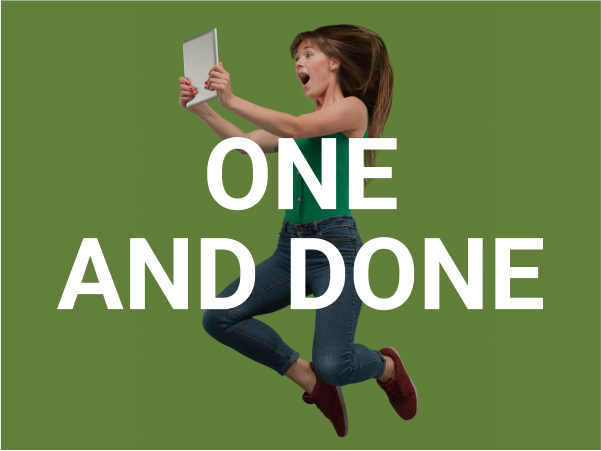
We’re crystal clear about that distinction on our site and we continually update our content to match the boards’ changing selection of textbooks and material.
TCM Review Seminars has an exceptionally high pass rate
Our test bank questions are organized by classes: You watch the video first and then you take the quiz. The explanations and references and testing strategies and comparative work are covered in the lecture videos, so you can simply refer back to the material for the answer explanation, although there’s one-on-one support available if you’re stuck. This is an approach that works and, for students who stick with the requirements and maintain our recommended score on their quiz dashboard, our pass rate is 94–98%, depending on the exam.
TCM Review Seminars has clear performance tracking and analytics
Students can measure and track their performance on our quizzes over time and assess when they’re ready to sit their board exams: We recommend that students only sit the exam when they’re consistently at 75% or higher. But we also offer one-to-one online study support to enhance that data—and provide a virtual shoulder to cry on when overwhelm kicks in.
TCM Review Seminars has a mobile-friendly platform, so you can study any time, any place

My goal with TCM Review Seminars was always to create a website that allows students to integrate studying into their day. Students can listen to the lectures while traveling. Our quizzes are deliberately kept short: no more than 30 questions with the exception of the mock exams and assessment quizzes. Students often tell me that they take quizzes between patients at their student clinic, while waiting to pick up their kids, or while on lunch break at work.
TCM Review Seminars’ interactive approach works for students from all theoretical backgrounds
Interactive learning is particularly key in acupuncture because the major theory all the North American TCM licensing exams tests is Zang Fu theory. Not all schools in North America teach Zang Fu theory. There are schools who focus on Classical Medicine or on Five Element approaches, and, in my 16 years of experience, those students appreciate having someone available who can answer questions.
TCM Review Seminars supports students with anxiety or learning differences
Many students suffer from testing anxiety or have learning differences. And these students really benefit from having someone to speak to and lectures and classes to attend. I decided against making the site adaptive, because test prep companies in most fields agree that what’s important is not the test format but the content. The adaptive format doesn’t allow students to fully review and master the broad spectrum of content required for board exams. For board preparation, comprehensive exposure to all potential topics ensures a deeper understanding rather than just focusing on areas where they are either stronger or weaker.
TCM Review Seminars has a comprehensive practice question bank

Now, many acupuncture review sites have practice question banks. But TCM Review Seminars is a full review course, so our bank of test questions reinforces important details from our coursebooks, our lectures, our live online classes, and our small-group tutoring. All our biomedicine questions have detailed answer feedback, as do a few hot-button topics, but more importantly, our videos contain the answers that students need for those questions.
TCM Review Seminars is affordably priced
Different review businesses have different pricing structures, and our courses tend to be longer, with more material. Per day, we usually work out more affordable than our competitors, but because I’ve learned from experience that it takes time to prepare for your board exams, the headline cost may seem higher. I’d encourage any prospective students to research the price comparisons for themselves.

If you’re a current student or a prospective student and would like to know more about what we do and what’s behind our exceptional pass rate and the heartfelt and genuine testimonials on our site, you can always email me: bina@tcmreview.com.
Emily Keaty’s Recipe for Success: Wellness, Community, and Acupuncture
Most of us come to acupuncture through love of the craft or a passion for healing, and building a business often takes second, or third, or even fourth place. Some of us also have to contend with friends, family, or even teachers who see acupuncture more as a hobby than as a profession. Both along my own career journey and during my time at TCM Review, I’ve been privileged to watch so many of our own students, carve out distinctive and inspirational career paths that are personally, professionally, and—yes!—financially rewarding.
This month, I’d like to thank Emily Keaty for taking time out of her busy schedule to share her story. I met Emily after she graduated from Yo San University in Los Angeles, when she came to us to help speed-prep her CALE and NCCAOM. Today, she’s mainly based in Shreveport, Louisiana, but visits LA once a month to maintain her practice there. She is working towards her DAOM in women’s health at Yo San University.

I talked to Emily about building a practice in a smaller city and the art of becoming a six-figure acupuncturist.
Tell us how you got started on your acupuncture journey
Growing up in Los Angeles, I was exposed to alternative wellness modalities as my parents were focused on sustainability and eating for longevity. As early as I can remember, I had a yearning both for a professional degree and for deep knowledge in the wellness field. When I entered college and had to pick a major, I realized there was no pathway forward for a legitimate degree in holistic health. I settled on food science and dietetics with a minor in business and Italian but ultimately it wasn’t the passion career I was seeking.
After college, I went on to study theater arts, then worked in commercial real estate, keeping my wellness interests as a hobby but constantly learning about food, nutrition, and herbs. My side hustle was the supplement section at Erewhon, an organic supermarket chain in Los Angeles County, when the tonic bar was just beginning. Simultaneously I was attending the Institute of Integrative Nutrition (IIN), then a monthly live class in NYC, which introduced me to the work of Paul Pitchford who wrote what is considered the textbook for TCM nutrition. His lectures inspired me to take his month-long intensive course based on his book Healing with Whole Foods, which included both TCM and acupuncture. When I came home from that intensive, a friend who was already in acupuncture school suggested I book an acupuncture treatment for myself. I had my first treatment at Yo San University Community clinic. I got off the table, walked into the admissions office, and started my master’s program on Monday.
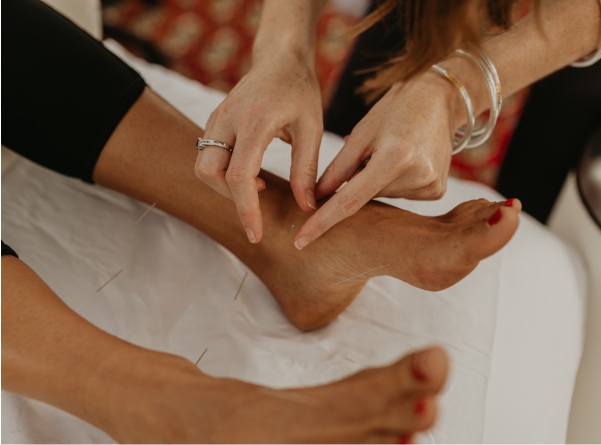
What was it about acupuncture that inspired you so much?
The thought of becoming an acupuncturist fulfilled so many of my unrealized dreams. I was inspired to join a line of ancient healers and valued the low-tech aspect of the medicine. The act of performing a treatment that could shift a patient’s wellbeing was and still is both rewarding and intriguing. As a profession and a practice, it is detail oriented, complex, and integrative: everything I wanted in a professional wellness degree.
And how did you choose Shreveport for your practice?
After I graduated acupuncture school and took my boards, I was recruited to work in multiple clinics across multiple states. I visited each one but could not find the right environment. During this transition phase, I visited my mom who had moved from Los Angeles to Shreveport to be near my grandmother, and my parents encouraged me to go to western medical school. I took 18 months of pre-med classes in Shreveport then realized that would mean giving up my dream. Shreveport offered me the opportunity to open my own clinic as I was supported and surrounded by my family. I am eternally grateful to serve in such a tight-knit and welcoming community.
Is it easy to make your business work with just one room?
As of now, I see one patient at a time in my studio clinic and I am always booked solid. I see 28 patients a week and my treatments range from $125-$375. It is a six-figure acupuncture business.
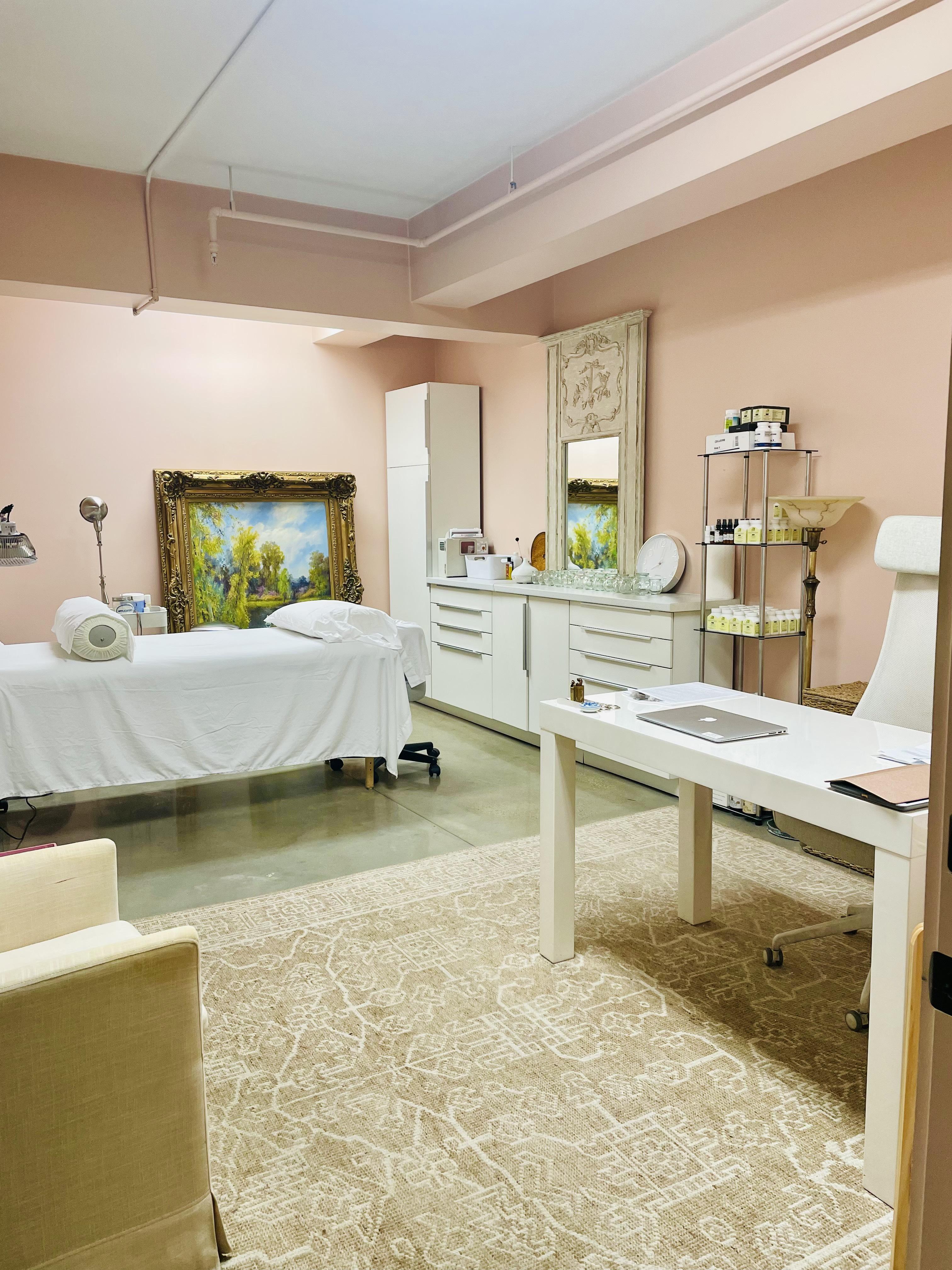
Have you ever taken business courses or worked with a coach?
I minored in business and attended several solopreneur business classes and retreats before acupuncture school. After acupuncture school, I enrolled in Alyssa Dazet’s 6-Figure Acupuncturist program. I had help along the way from friends, colleagues, and professionals and am constantly perfecting the way I do things to improve my practice. Although I do things my own way, I credit a lot of my ability to set up a clinic and participate in organic marketing to Alyssa Dazet. She was and still is a mentor for me.
You specialize in three areas: wellness, fertility, and beauty. How did that come about?
My deepest mission is to empower women. After completing the IIN program in 2008, I started a holistic health coaching business called Beauty Through Wellness where I helped women heal their skin issues by balancing their hormones through diet and nutrition. Today, I am pursuing this same specialty with the superpowers of Chinese medicine. When I set up my acupuncture practice here in Shreveport, I thought I would solely focus on TCM dermatology, including facial rejuvenation acupuncture, microneedling, and hormone balancing. I took an immersive training in Song Dynasty facial acupuncture techniques before I opened my clinic. Although I still do all of this, many patients came to see me seeking help with fertility. While in the master’s program at Yo San University, I focused on women’s health: I interned in the women’s clinic and took the women’s health module classes. Although there was a learning curve in the beginning with IVF, I felt more competent and confident due to my longtime interest and training. My practice blossomed into a fertility acupuncture practice from the referrals of the many women I helped conceive and carry a child. My fertility patients now come to me post-partum for a holistic mommy makeover with facial rejuvenation acupuncture, microneedling, and Japanese scar therapy for stretchmarks and caesarean scars.
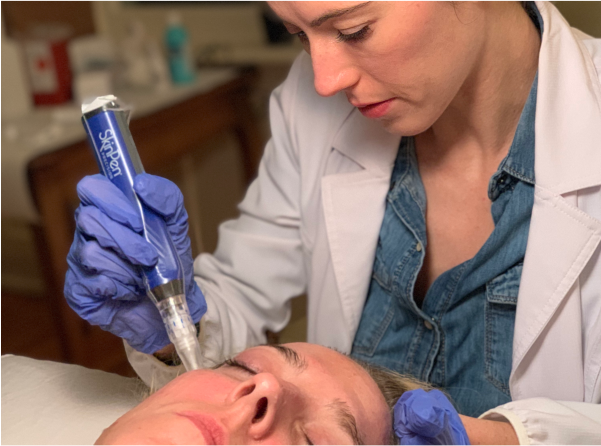
There’s a lot of anxiety about the viability of acupuncture as a career, but you’re making six figures. What, for you, are the keys to success?
For me, the primary key to success was getting involved in my community. Shreveport is not online: It is a community based on solid organic relationships. Before I knew I was opening my practice here, I joined the Junior League, I appeared in two productions at the community theater, I participated in the local film festival, I became part of the board of a museum, and more. When I opened my practice, I was welcomed with open arms as I had invested in relationships and the vitality of the community. The second element is having an online presence and an organized practice. Creating a website with an integrated electronic health record system for online booking was a game-changer for me
Are you a one-woman band, or do you have help?
I used to be! At first, I did everything on my own. Phones, laundry, scheduling… Now I have a virtual assistant who works in the background. He orders inventory and herbs, updates charts, responds to patients, and keeps my website and Facebook page current. I use a laundry service and a cleaning service, and recently hired AcuHub, an acupuncture reception service that integrates with my electronic health record software, to answer my phones.
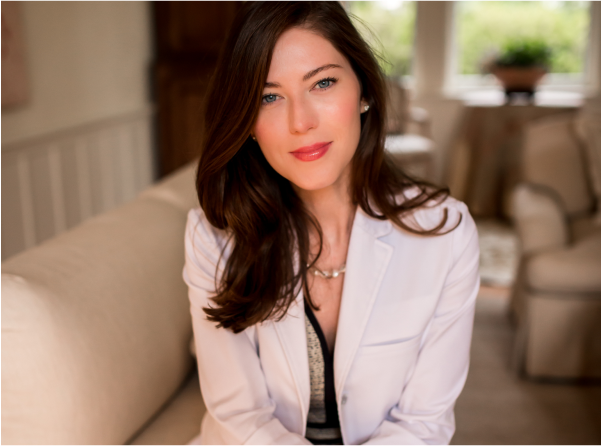
If you could give one piece of advice to someone who was about to graduate in TCM or acupuncture now, what would it be?
I would remind any acupuncturist, new or seasoned, that we have an incredibly important and long-regarded profession. The art of healing is a marker of civilization. A quote attributed to Margaret Mead argues that the first sign of civilization is a healed human femur. Wounded animals in the wild would die before their bones could heal, but a healed bone shows that a wounded person received help from others. Ötzi, also known as the Iceman, is the natural mummy of a man who lived around 3300 BC: His remains were discovered in 1991 in the Ötztal Alps at the Austria–Italy border. Through careful study of his body, scientists have discovered that the tattoos on his skin are acupuncture points. Our job is sacred and ancient yet timeless and modern. Our medicine is ripe for integrating into western medicine and is one of the most exciting and rewarding fields.
Tired? Overloaded? Procrastinating? The Pomodoro Technique can help
We live in a world full of stimulation, with devices, platforms, projects, and people competing for our attention. Multi-tasking is expected in pretty much every area of life. But single-tasking, which is to say focusing on just one task at a time, can boost productivity, reduce stress, and enhance learning.

Big projects—like passing your acupuncture board exams—can feel overwhelming, particularly when you’re juggling them with work and personal life. But if you’re struggling to find time to study, if you keep catching yourself procrastinating, if you’re permanently fatigued, or if you’re simply overloaded, working towards that goal one piece at a time can help.
The Pomodoro Technique is probably the best-known single-tasking system. It’s helped millions of people improve their time management, productivity, and stress levels over the years by breaking projects down into simple tasks. Quite likely, it can help you too.
Introducing the Pomodoro Technique
Created by Francesco Cirillo, a software developer and productivity guru, in the late 1980s, the Pomodoro Technique takes its name from the Italian word for “tomato”. It uses a timer—originally, a physical gadget shaped like a tomato, but now more often an online version—to track work or study sessions.

The classic system works in 25-minute blocks, each followed by a five-minute break, ideal for people who are squeezing study time into small windows. When you’re using the method for longer sessions, the Pomodoro Technique suggests following a block of four 30-minute study and break combos with a longer break.
You can also opt to set the Pomodoro timer for different study periods. Some people find a 50-minute focus session followed by a 10-minute break works better for them.
Sounds simple? It is. But it’s also effective. Firstly, the technique encourages you to break down projects into individual, bite-sized chunks and add them to your calendar. Secondly, and perhaps even more importantly, it forces you to take breaks.
Studying smarter often means studying shorter
You may have seen the claim that the human attention span has dropped to just eight seconds, less than that of a goldfish, which can concentrate for nine seconds. Fortunately, neither half of that statement is true. The eight-second factoid is based on how long 25 people took to leave websites they didn’t like, while goldfish don’t have particularly short attention spans or memories.
In fact, everyone has a different attention span, and everyone’s attention span varies depending on the type of task involved. When it comes to focusing at work or in the classroom, researchers have placed the concentration sweet spot anywhere between 10 and 52 minutes.
Studies are definite, however, that taking breaks can help. One found that people who took a short break halfway through a 40-minute task that required a lot of concentration performed better than people who focused for 40 minutes without a break. So, while it might feel that taking time out is wasting precious minutes that could be used for learning, rest is actually vital for resetting focus.

Our brains and bodies weren’t built for constant focus
We weren’t designed to sit in front of a laptop concentrating, but to move around in nature hunting and gathering. So breaks are important both at the neurological level and the physical one. Rest lets our brains switch out of conscious study and into the Default Mode Network, which facilitates learning and consolidates knowledge.
Physically, sitting for long periods slows the flow of blood. And it’s been recognized since the 1950s that people who sit a lot experience poor health outcomes. One small study found that getting active every 30 minutes helps with both blood sugar and blood pressure; many health authorities recommend breaking up time spent sitting with short walks.
So if you make your Pomodoro break an active break, you won’t only improve your blood circulation and physical health. You’ll nourish your brain, support your studies, and reduce stress. You could use your five minutes for a short walk or a run, jump rope, do an online workout, or even clean the house.
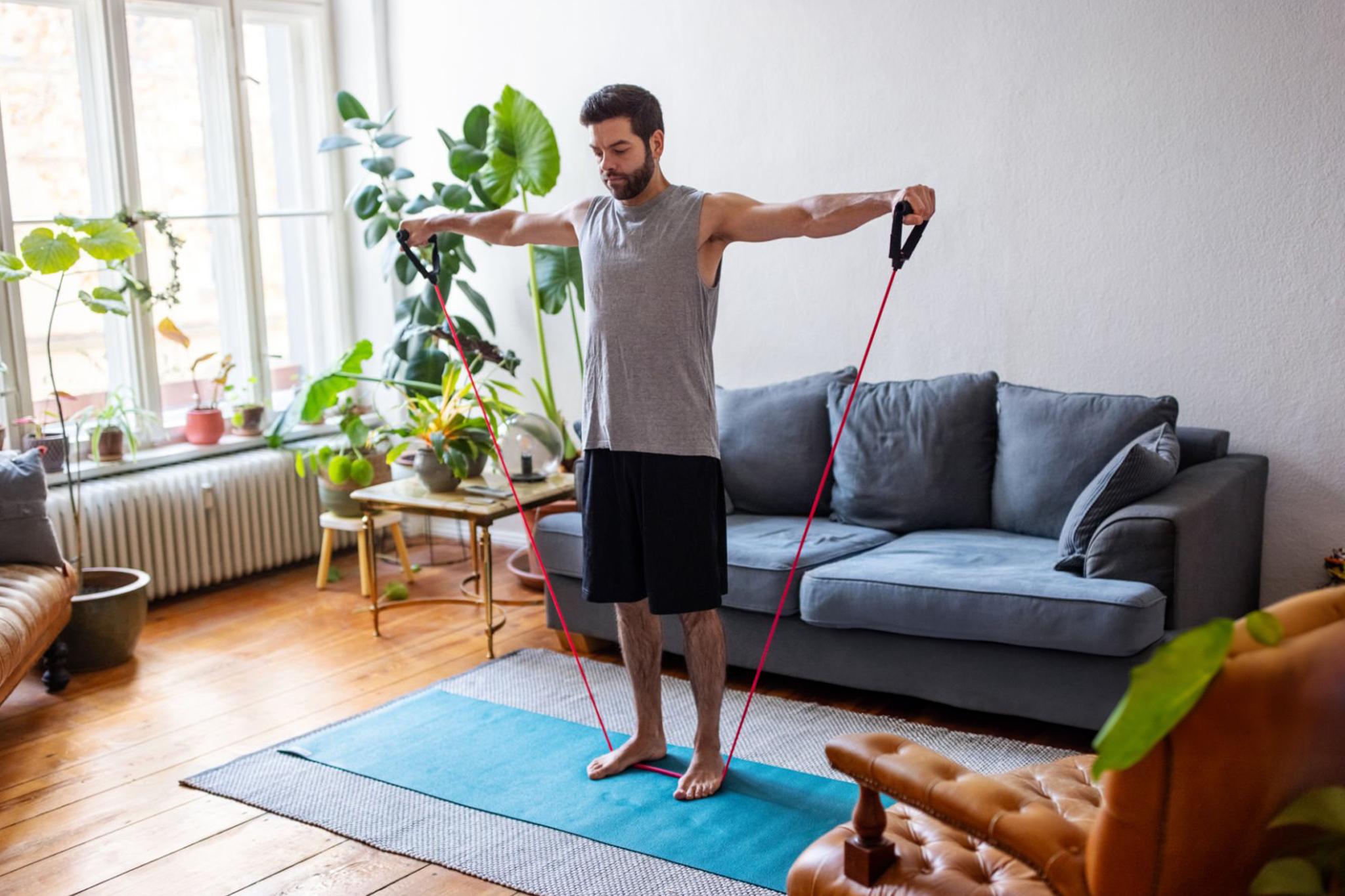
If you’re really struggling with procrastination, find an accountability partner online
I’m a big fan of a site named Focusmate to counteract procrastination. It takes the Pomodoro Technique to a new level by pairing you with an accountability partner.
Essentially, you book a 25-minute, 50-minute, or 75-minute session with an accountability partner into your calendar. At the start of your session, you both switch on your cameras and share your goals. Then you work alongside each other for the period you’ve committed to, with a check-in at the end.
This is another apparently simple idea that’s underpinned by science, particularly the psychology of social pressure. It’s easy to zoom past a task that you’ve blocked into your calendar. But once you’ve committed to working with a partner, you have an emotional investment in showing up for them. Once you’ve told them what you intend to do, social pressure keeps you motivated to deliver on that goal.
You can get a lot done in just 25 minutes
To make the most out of the Pomodoro Technique, you’ll ultimately find yourself moving towards a structured daily and weekly plan—and I’ll talk more about that next month, when we dive into time blocking.
But if you’re feeling overloaded and just want somewhere to start, there are plenty of topics you could cover off in just 25 minutes.
A single 25-minute session could be enough for an overview of one of the shorter herb categories or an overview and cross-comparison of formulas in a shorter category. You could learn the points on the Lung channel or the Large Intestine channel. Or you could do some comparison work, perhaps Liver Qi versus Stomach Qi, or the difference between Liver overacting and Liver reversal.
Whatever topic you choose, the approach is simple. Sit down, set a timer—and don’t forget to take that break!
|
||
|
|
||
|
|
||
|
Navigating Immigration to Canada or the USA for International Acupuncturists
|
||
|
Understanding the Differences Between the CALE, NCCAOM, and Pan-Canadian Exams Part 2
|
Understanding the Differences Between the CALE, NCCAOM, and Pan-Canadian Exams Part 1
Depending on where you live — and, importantly, where you plan to live over the course of your career — you’re likely studying for one (or even two) of the three different North American licensing exams: the Pan-Canadian Exams, the CALE (California Acupuncture Licensing Exam), or the NCCAOM (National Certification Commission for Acupuncture and Oriental Medicine) Exams.
Just as it’s easy to assume that your school will teach to your test —and disappointing when that is not always the case — it’s natural to believe that these exams are all, essentially, the same. But the acupuncture board exams are not the same and a one-size-fits-all approach may not get you through.

Board Exams are Different but Equal
Even a quick skim of the candidate handbooks reveals that reading lists, content outlines, test criteria, and approaches to testing vary from board exam to board exam. Get closer in, and you’ll realize that everything from points to herbs to biomedicine are treated differently.
The CALE, the NCCAOM and the Pan-Canadian acupuncture licensing exams don’t just cover subtly different topics: They cover the same topics as one another in subtly different ways. So it’s crucial that you study the course material for the board exam (or exams, plural) that you’ll be taking and practice the right style of test question.
It’s also vital that the course material you study is current. Topics change over time and both tests and exam book lists are constantly evolving, making it critical to stay on top of the content.
Some Topics are Limited to a Specific Geography
The test you take will depend on the geographies you intend to practice in. I’ll talk more about where your different board exams are valid, the right approach to ensure your license lasts your entire career, and what you need to do if you change geographies next month.
For now, let’s just say that folks planning to practice in California need to take the CALE exam, folks planning to practice in most other US states will need to take two to four of the NCCAOM exams, and anyone who wants to practice in the Canadian provinces that regulate acupuncture will need the Pan-Canadian exams.
But the geography of the exam also dictates some of the content. While both NCCAOM and CALE cover US federal legislation such as HIPAA (the Health Insurance Portability and Accountability Act), the CALE covers California laws and regulations in some detail. That’s not required for NCCAOM, which speaks to states outside California, or the Pan-Canadian, which is a Canadian exam.
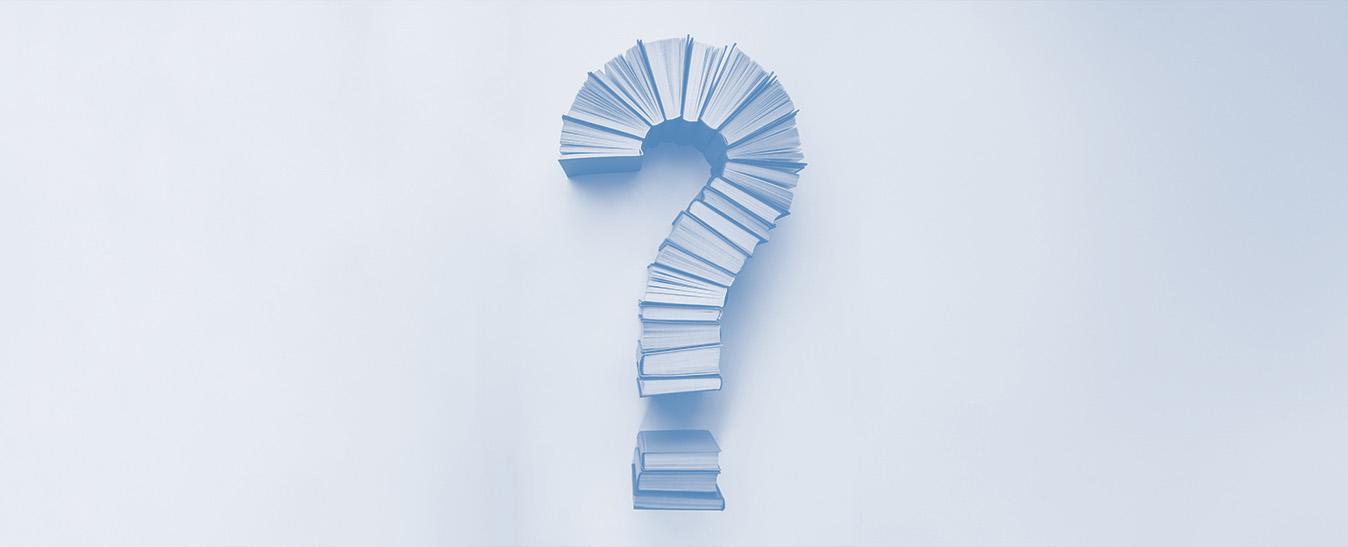
The Structures of the Exams Vary
One of the most obvious differences between the acupuncture board exams is how they’re structured. For your NCCAOM boards—depending on the state you’re licensing for—you could be taking two, three, or all four of a series of different tests spread out over months. The CALE bundles all the topics into one single test of 200 questions of which only 175 questions count towards the final score; the Pan-Canadian features two big tests on consecutive days followed by two or three smaller exams that may or may not be open book depending on the province you are testing in.
Some argue that this different structure means the NCCAOM board exams are “easier” than the CALE or the Pan-Canadian exams. But I don’t buy that argument. Sure, the NCCAOM split approach means you have more time to review each specific topic ahead of the exam. But, with 100 questions per exam there’s really no place to hide if you haven’t mastered a topic.
Even Biomedicine Content Changes Across Exams
One area where geography matters more than you’d think? Biomedicine. Take the thorny question of blood pressure guidelines.
These are the American Heart Association guidelines:
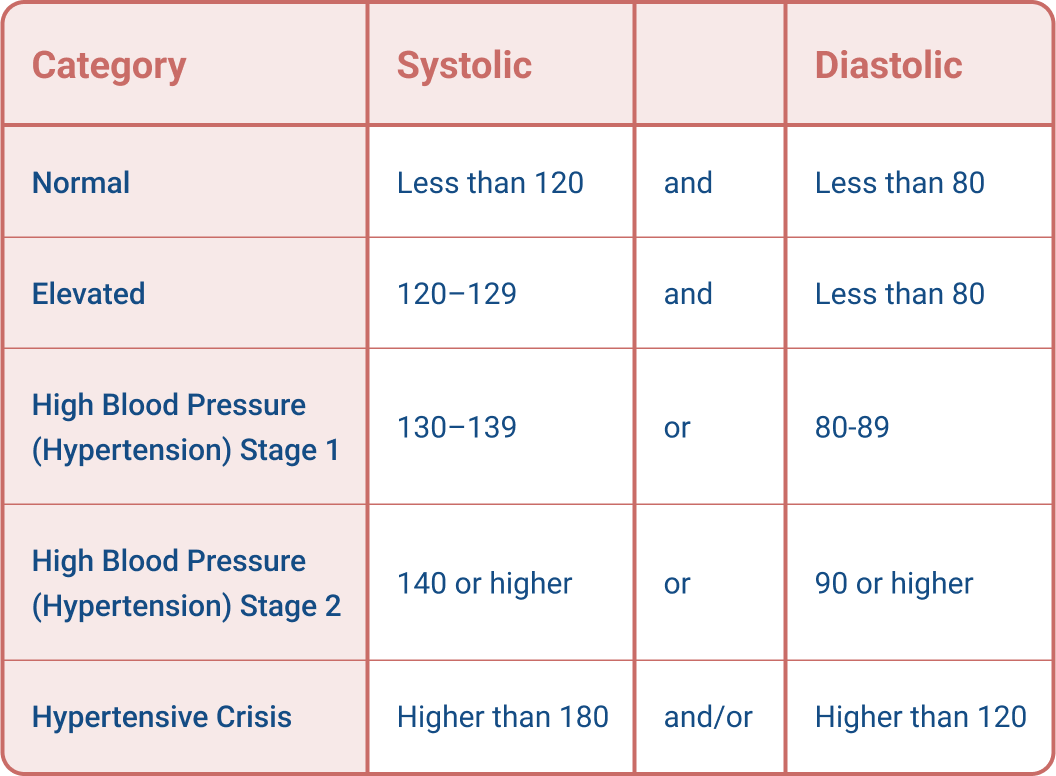
These are the Heart and Stroke Foundation of Canada guidelines:
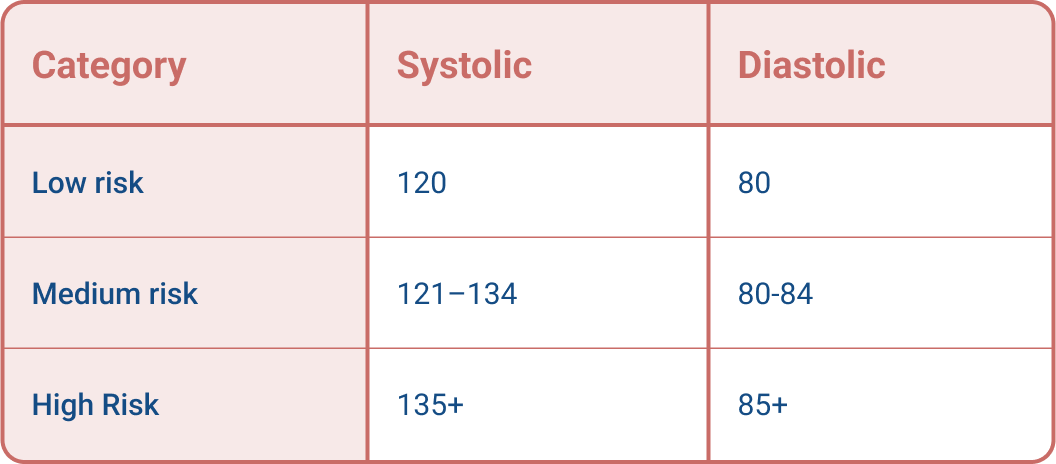
As you can see, both the ranges and the terminology are quite different, while Canada also specifies more stringent guidelines for groups including diabetics. So your answer to a blood pressure question on the Pan-Canadian will be different from your answer to a blood pressure question on NCCAOM or CALE—at least until one or the other country changes their hypertension guidelines, which happens more often than you’d think.
More generally, as anyone who’s got into the weeds with the list of pharmaceuticals and pharmaceutical-supplement interactions knows, the NCCAOM Biomedicine exam is more demanding and contains more content than either the Pan-Canadian or CALE biomedicine elements.
All Three Exams Have Their Own Lists of Herbs and Formulas
As well as using its own list of recommended textbooks, each board publishes its own distinct lists of herbs and formulas. Out of the three boards, the Pan-Canadian’s list of formulas is the most daunting, including just over 275 formulas. NCCAOM’s formulas list, by contrast, has just over 160, with CALE at just over 80.
Needless to say, like every other element of the exams, the lists of herbs and formulas change over time.
Chinese Translations Can Vary from Exam to Exam
While formula names are consistent, because all exams use Bensky as their source, the names of the different types of pulse may be translated differently from exam to exam, just as they’re translated differently from textbook to textbook.
The CALE publishes a list of approved pulse translations; so does the Pan-Canadian. But NCCAOM serves all 50 states plus the territories and recognizes that different schools teach from different textbooks. So pulse terminology on the NCCAOM Foundations exam will likely draw on multiple textbooks: Hua Mai could be either “Rolling” or “Slippery”.
Even the Points are Often Handled Differently
While the differences between the acupuncture board exams when it comes to acupuncture treatment are less obvious than the differences in herbology, there’s still considerable variation in how the different exams handle points.
For example, the NCCAOM Acupuncture exam sometimes covers Bensky points; the CALE and Pan-Canadian exams never do. The NCCAOM Acupuncture exam and the Pan-Canadian exams use Deadman for needling depths, crossing points and point location; the CALE uses CAM (Chinese Acupuncture and Moxibustion). The Pan-Canadian exam has a different set of contra and cautioned points than the NCCAOM exam.

The information for the acupuncture modalities comes from different textbooks for each exam, although all rely on CAM to some degree. The CALE leans most heavily on CAM, using the 2017 CAM edition currently for most of the questions. The NCCAOM, however, has started incorporating elements from the 2019 edition of CAM, which contains a lot of new information.
One area where the change is most obvious is with Scalp acupuncture. Between 2017 (CALE) and 2019 (NCCAOM), the scalp acupuncture lines have been completely renamed. Just to make life even more complicated, the Pan-Canadian uses a completely different scalp acupuncture system then either CALE or NCCAOM.
As I said last month about schools, this variation doesn’t mean that one board is right and another one is wrong. The boards are working to streamline thousands of years of practice and a wealth of different diagnostic systems into a single set of easy-to-assess exams.
And while you may never use many of the herbs and point prescriptions you drained Vital Qi to study in your clinical practice, those exams are a critical milestone on your professional journey. So, buckle up, study the right material, and Prepare to Pass!
Most TCM Schools Don’t Teach to the Test — and Here’s Why That’s OK
If there’s one complaint I hear over and over again from acupuncture students preparing for their board exams, it’s that their TCM schools don’t teach the exam content outline they’re studying. Surprisingly, they’re right. And, even more surprisingly, there are good reasons for that.
The practice of acupuncture is a lifelong journey, and your board exams are just one milestone along that path.
Remember how the process of learning to drive really starts after you get your license? That’s how it is with the acupuncture boards, too.
There are many different ways of practicing acupuncture
Acupuncture is not a monolith, and different practitioners practice in very different ways.
In your clinical practice, you might use Japanese acupuncture, neuro-acupuncture, Five-Elements, classical, or Zang-Fu diagnostic theories. You might specialize in treating diabetes, eye disorders, fertility, or pain management. You might work in cool, rainy Oregon or hot, dry Las Vegas—or brave Quebec’s long, icy winters.
Whichever path you take and whichever location you choose, your practice will look very different.
How do you compress all those different possible future practices—plus over 3,000 years of written history—into a single one-size-fits-all test? Honestly, you can’t.
And so, the boards assess just one part of the picture.
Clinical practice is different from passing exams
With thousands of years’ worth of texts plus a wealth of different theories and modalities, TCM is more art than science. And, frankly, clinical practice rarely looks like the textbooks.
Take me, for example. I’ve been practicing for almost 15 years and use mainly Japanese acupuncture in my clinical practice. I don’t use the points the way I teach them for the board exams. In fact, I often don’t check tongue because Japanese acupuncture is a palpation-based system. Tongue diagnosis is not as accurate for diagnosis as body palpation and the pulse.
Yet, when I’m teaching students to pass their board exams, I follow the board diagnostic patterns and the board textbooks—a very different approach to the one I’d use if I was mentoring someone in my clinical practice.
The reason for the inconsistency is, weirdly, consistency. Acupuncture licensing agencies need to create consistent standards across a wide range of practitioners in a huge spread of geographies. To do that they pick standardized textbooks that are easy to assess.
Your acupuncture school’s main priority is likely not just getting you through the licensing exams—although they obviously don’t neglect that—but preparing you to be a successful practitioner. For that, they’ll need to teach you things that—gasp!—aren’t on the board exam’s content outline and they’ll likely also leave out things that are. It’s a constant balancing act for them between graduating great clinicians vs. students that can pass their board exams.
Geography matters—a lot
You’ve likely read some if not all of Giovanni Maciocia’s writings while in school. His Foundations of Chinese Medicine is one of the key board textbooks.
And it might be easy to think that, if your school’s teachings differ from Maciocia’s, either Maciocia or your school (or both!) are wrong. But here’s the thing. While born in Italy and trained in England and China, Maciocia practiced in cool, rainy England.
When he updated TCM theories to encompass modern, Western conditions, he naturally focused on the pathogens he encountered in his clinical practice. Given the Damp climate, his patients were more prone to Qi and Yang Deficiency with Damp and Phlegm Accumulation.
If you’re training in the desert of El Paso, Texas, however, your patients are often going to suffer problems related to Heat, Dryness, and Yin Deficiency.
Correctly, both your classes and your experience in the school clinic are going to prepare you to treat the conditions that are prevalent in your geographical area, not necessarily Maciocia’s. So, in clinic, patterns may not manifest the same as how they appear in the textbooks.
Different schools teach different theories
Geography aside, schools also have different approaches to TCM.
The majority of schools in both the US and Canada teach Zang-Fu Theory, a version of TCM that’s always been present in the texts but was standardized under Mao Zedong in 1950s China.
All board exams—CALE, NCCAOM, and Pan-Canadian—center on Zang-Fu Theory, although they will generally have some questions on other theories. So, students at Zang-Fu schools will find most overlap between what their school teaches and what the board requires—although there will still likely be plenty of gaps.
But you may go to one of the schools that teach acupuncture a different way. And that’s OK!
A different approach doesn’t mean your school is wrong
Classical medicine schools teach TCM from Shang Han Lun, Wen Bing Lun, and other classic texts. You’ll likely have some questions on these texts on your board exam. But, while there is some overlap between Zang-Fu Theory and classical medicine, you’ll also be left with a lot of Zang–Fu Theory to learn.
Five-Element schools operate very, very differently from Zang-Fu Theory schools and use the points in different ways. To pass your board exams from a Five-Elements school, you’ll need to teach yourself Zang-Fu Theory. You may not even get a single question on Five-Elements on your exam even though this is your area of expertise.
I need to emphasize: None of this means your school is wrong, or that you made the wrong choice. People can and do develop their clinical practice from all sorts of different theoretical backgrounds, and your board exam is very much one stage along a journey.
But it does mean that—just as people with backgrounds in western medicine tend to find the biomed component of their exams easier to take —people from Zang-Fu backgrounds often have an easier run at their board exams.
And, yes, you need your board exams
While clinical practice is at the core of treating patients, your board exams are more than just paperwork. They can expose you to different theories, help you master topics from herbs to biomedicine, and prepare you to network with other Western Medical professionals, work in hospitals or with veterans.
Over the next couple of months, we’ll take a look at how and why the various board exams are different, and how to pick the right board exam to set you up for your professional career.
For now, I hope you can look more kindly on your teachers. They know what they’re doing. And the books aren’t wrong, either. It’s just that TCM is even more complex—and more individualized—than it looks.
How to Pass Your Exams – First Try Using Space Repetition
|
|||
|
Understanding How the Brain Works
Whether you’re struggling with memorizing CAM and Maciocia Point Prescriptions or trying to learn the properties, tastes, and temperatures of the 300-plus single herbs, it can sometimes feel that the more you learn, the more you forget. Believe it or not, this sense that you’ve filled the pot to overflowing is extremely common, particularly among students loading up on the sheer volumes of information licensing exams demand.
But forgetting isn’t just common. It’s a fundamental part of how the brain works. To understand why, it helps to think of the brain as a muscle.
The brain isn’t a muscle, of course. It’s an organ—not a zang organ, not a fu organ, but an extraordinary organ. But, just like our muscles, it balances agonist and antagonist. You wouldn’t have flexion without extension. And, some scientists believe that the process of forgetting is not just the counterweight of memory but so intrinsic to memory that it’s a form of learning in and of itself.
|
The Brain Is a Muscle Understand How it Works and You’re One and Done on Your Exams! There’s a second way that the brain is just like a muscle. The more you exercise it, the stronger it becomes. Which sounds great, until you realize that, just like with physical exercise, over time you hit plateaus and may even regress. So if you’ve found yourself staring at a wall covered in mind maps or going through your flashcards for the fiftieth time that night but absolutely nothing seems to stick, you’re not alone. You’re just in the early stage of what’s known as the Forgetting Curve. Next month, I’ll show you how you can make the Forgetting Curve work for you, not against you, and how you can build lasting memory and understanding through one simple technique. But this month we’re going to put ancient Chinese wisdom to one side and zip forward a couple of millennia to 19th-century Germany and a young psychologist called Hermann Ebbinghaus. Introducing the Forgetting Curve:In the 19th century, most scientists believed it was impossible to do academic research on the higher mental functions. But Ebbinghaus was convinced that memory could be studied and, just as you might use your own body to explore acupressure points, made himself the subject of his own experiment. Ebbinghaus created a set of 2,300 nonsense syllables, wrote them all down on cards, and began pulling them out of a box, memorizing them and testing his recall. Memory, the book he published in 1885 to summarize his findings, still shapes our understanding of how memory works today. (In fact, a research team reran a version of his experiment in 2015 and found it held up well.) Ebbinghaus proved what we all know through bitter experience: over time we forget information. Unless we continually reinforce our learning, memories fall away. But he also made one key discovery: most forgetting happens soon after learning. This is the Forgetting Curve. Take a look. You’ll notice recall falls steeply at the start of the curve then levels out over time. Scarily, within 20 minutes of learning information, we’ve normally forgotten a massive 40%. After an hour, we generally remember less than half of what we learned. After a day, we’ll find barely one-third of our hard work has stuck, and after six days we’re down to under a quarter. In evolutionary terms, this is, likely, a good thing. Forgetting information that’s no longer important can help us adapt to a changing world and make better decisions. The night before your board exam? That’s not ideal. The single biggest takeaway from the Forgetting Curve is this: the biggest drop in retention happens soon after learning. In one of those insane paradoxes that mother earth just loves to throw at us, the very time we feel our memories should be freshest is the exact period that they’re disappearing fastest. Fortunately, another great insight from Ebbinghaus provides techniques that can help us turn the Forgetting Curve to our advantage. I’ll talk about this in detail next month but, for now, let’s look at some more Ebbinghaus wisdom that can help you give your brain muscle a powerful but pain-free workout. Welcome to the Memory GymBeyond the Forgetting Curve, Ebbinghaus’ research revealed other fundamental truths about the way our memory works. You can use these to help your brain muscle build strength and endurance. First up? Remembering is easiest when concepts have meaning. Ebbinghaus had to invent a whole new set of nonsense syllables to use in his study. He carefully assessed them to ensure that none of them had any meaning or connection to common words. Why? Because real words would have associations and linkages that would help him remember them—and some would be easier to remember than others, distorting his data. The less meaning a term, fact or concept has, the most closely the memorization process follows the Forgetting Curve. Like Ebbinghaus’ nonsense syllables, pinyin herb names are difficult to learn at first for English-speaking TCM students. But the more you learn, the more comfortable you’ll become with the pinyin names as you start to form patterns and create associations. (Huang means yellow and most herbs with huang in the name will clear Heat; zi means seed and most herbs with zi in the name are seeds that treat the eyes.) So, if you’re struggling with understanding broader TCM concepts, take a step back and look for commonalities. Next, just as correct form is vital in the gym, presentation is key to effective recall. Well organized notes in a structure that works for you will help you master your material far more easily than a scribbled scrawl on a Post-it. Finally: just as with any muscle, rest and nutrition are key to brain function. When you’re studying hard, maybe juggling learning with work and family commitments, it’s easy to eat badly, miss out on sleep, then beat yourself up because learning isn’t working. But if you stay up till 3am sweating over your atlas of acupuncture points, your sleep-deprived memory will struggle. And the worse your self-care becomes, the harder memorization gets. It’s the classic vicious circle: More stress means more late nights—and even worse retention. So, to help memorize your Qi pathways, look after your own Qi, and keep it nourished with good food and, yes, fresh air. Happy studying! And… be kind to yourself. |
Why “Eating A Frog” Every Day Is the Best Way to Pass Your Licensing Exams
Mark Twain said if it’s your job to eat a frog, it’s best to do it first thing in the morning. And if it’s your job to eat two frogs, it’s best to eat the biggest one first.
Maybe you are thinking what frogs have to do with preparing for your board exams. Well, sometimes just clearing space in your day to study for your exam can feel like eating a giant, green bullfrog. You know you’ve got to do it. But there are so many other things to get done first like cleaning behind the fridge or organizing your sock drawer or adding tabs to Maciocia’s Foundation of Chinese Medicine, all 1319 pages.
In the last 6 months of acupuncture school, keep your motivation high can be challenging. When your Spleen Qi is perpetually sinking, unable to produce Post Heaven Qi, Essence or Blood, and your Liver is permanently stagnated, you can lack the motivation it takes to even begin to study for your licensing exam. So…
If you struggle with procrastination.
If you feel you are getting a lot of study time in, but the big important topics never seem to be completed.
If you have a difficult time sticking to your study plan.
If you can’t decide what to work on when you sit down to study.
Then it’s time to learn the fine art of Eating the Frog. A frog a day might not keep the doctor away but it sure can help you prepare for and pass your board exams. But why stop there, it will probably also help you set up a rock star clinic or achieve any other dream you have that you just can’t seem to manifest.
 |
How to Eat the Frog:
Eating the Frog is a simple 3 step process that has nothing to do with deep fryer or seasoning. It’s a simple productivity hack created by Brian Tracy in his book Eat That Frog!: 21 Great Ways to Stop Procrastinating and Get More Done in Less Time
Step 1: Identify your Frog. The frog is always the hardest but most important task of the day. If you are like me, you probably have a small pond worth of frogs and that’s okay. Pick just one! The method sets you up to eat a frog a day. That’s 365 frogs in a year. There’s plenty of time to work through your list. Your frog is always the thing you like to do the least (Zang Fu Patterns) or one that has the highest impact (complete your licensing exam application and submit it with payment to the CAB/NCCAOM). Generally, it’s the one thing that requires the most time and energy.
Some guidelines for selecting the best frog every single time:
– Pick something that you can complete in 1-3 hours.
– Break it down into smaller steps if needed.
– Don’t plan ahead. This might sound counterintuitive. You don’t want the next 6 months of frogs planned out on a calendar. Identify the perfect Frog for the day is really about finding the thing you feel least motivated to do. How you feel about the tasks on your list changes from day to day depending on your energy levels. Preplanning your frogs will set you up for getting behind quickly. It’s human nature to overestimate what you can get done in a day and underestimate what you can get done in a year.
– Overplanning can leave us feeling bad when we can’t get everything we want to get done, done. Instead, we look for low-hanging fruit like making flashcards, reworking your study plan, or skimming through a TCM Review video to get a sense of accomplishment. I’m not saying that watching my videos is not helping you prepare for your exam. I am saying that watching the videos is just the preliminary step in preparing for your exam. What is key is the deep work. Learning the material and integrating what you learn into your board exam knowledge bank.
While you don’t want to preplan your frogs out for a month or even a week, you can plan your frog the night before. This is close enough to plan accurately but not so far out that you find yourself building up mental resistance to doing the task.
Somedays you’ll find that you have two frogs to eat. On those days, eat the biggest frog first.
The beauty of this technique is that you get to start fresh every morning. It lets you tackle your frogs one day at a time.
Step 2: Once you identify the Frog, eat it!
Meaning do the most important thing first thing in the morning or immediately at the beginning of your study session. Don’t let yourself put it off until later.
Eating the Frog takes advantage of your best most focused time. You’re the most focused and willpower is highest when you first sit down to study. Eat the frog means you are working with your natural body energy. You tackle the hardest, most mentally taxing job first.
This method will see you making progress on some of the big challenging topics for your licensing exam. This will have a direct effect on your motivation and engagement with studying. You’ll step into a vicious cycle of getting things done. And that will spill over into how you feel about the licensing exam and your ability to pass the exam. When you experience a win at the beginning of your study session, it will help you build momentum and positive emotions that will carry you through the rest of your study session. It sets you up for a win at the beginning of your study session which has also sorts of positive dopamine-releasing effects. You can use the win to propel yourself forward for eating another frog the next day.
Step 3: Repeat every day.
The benefit of Eating the Frog is to set up deep work habits. Deep work habits are going to set you up for a win every day. These are tasks like learning the point prescriptions, or memorizing the single point functions, or re-organizing the channel pathways by the area of the body they go to. It’s the studying and integration of the material you need to know to pass the exam.
One more tip about working with this technique. Setting up your daily Frog is easy, but it takes will-power to put the practice into place. So if you find your will-power is lacking, grab some Kidney tonics, needle KD3, BL23 and Bl52, bolster up your spleen, and get it done. You’ll thank yourself for your perseverance when you are hacking your license on the wall of our future clinic.


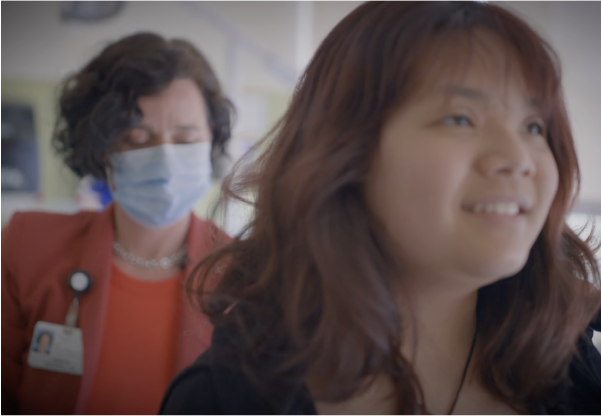
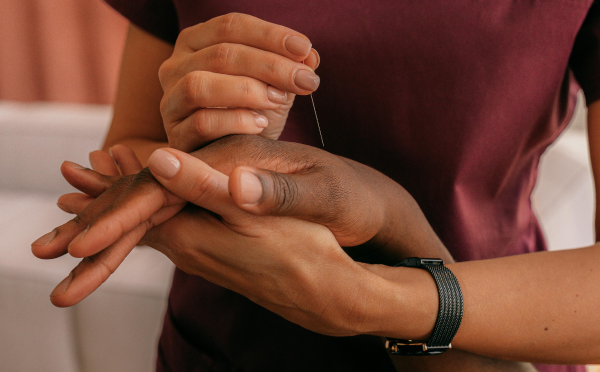



 Mike lives in the Entlebuch region, a UNESCO biosphere reserve.
Mike lives in the Entlebuch region, a UNESCO biosphere reserve. Mike practicing yijin jing qigong alfresco.
Mike practicing yijin jing qigong alfresco. Schwingen wrestlers in national costume.
Schwingen wrestlers in national costume.


